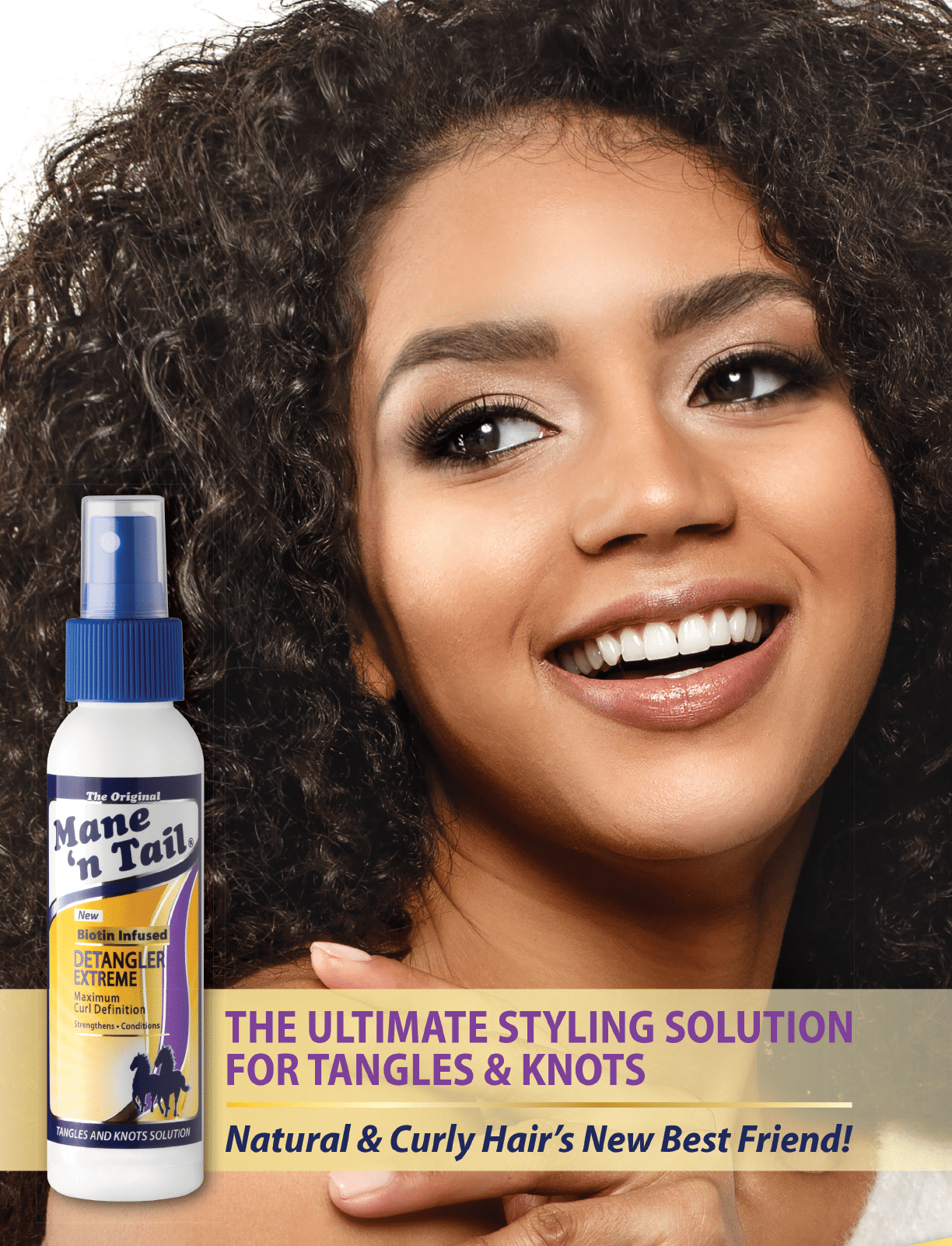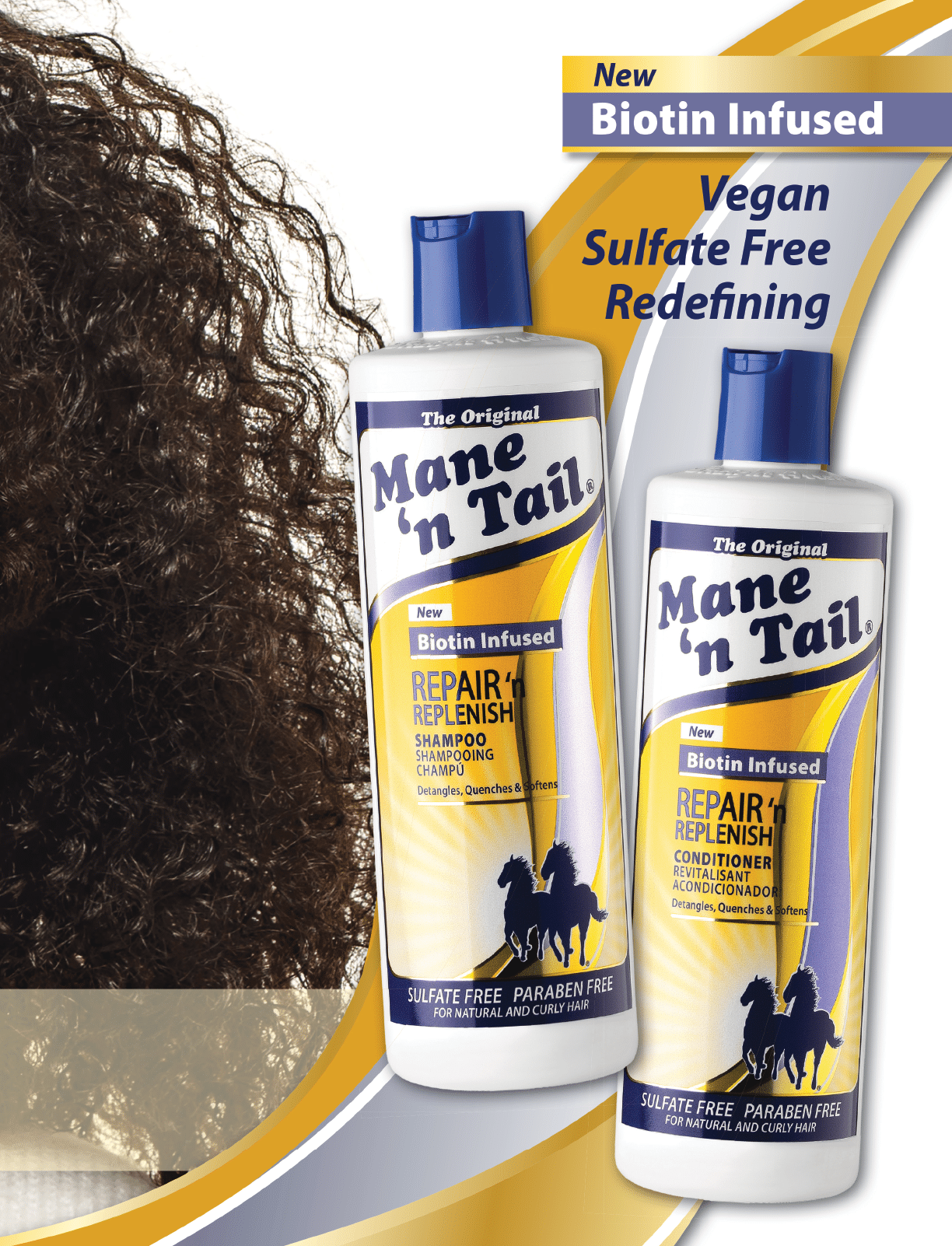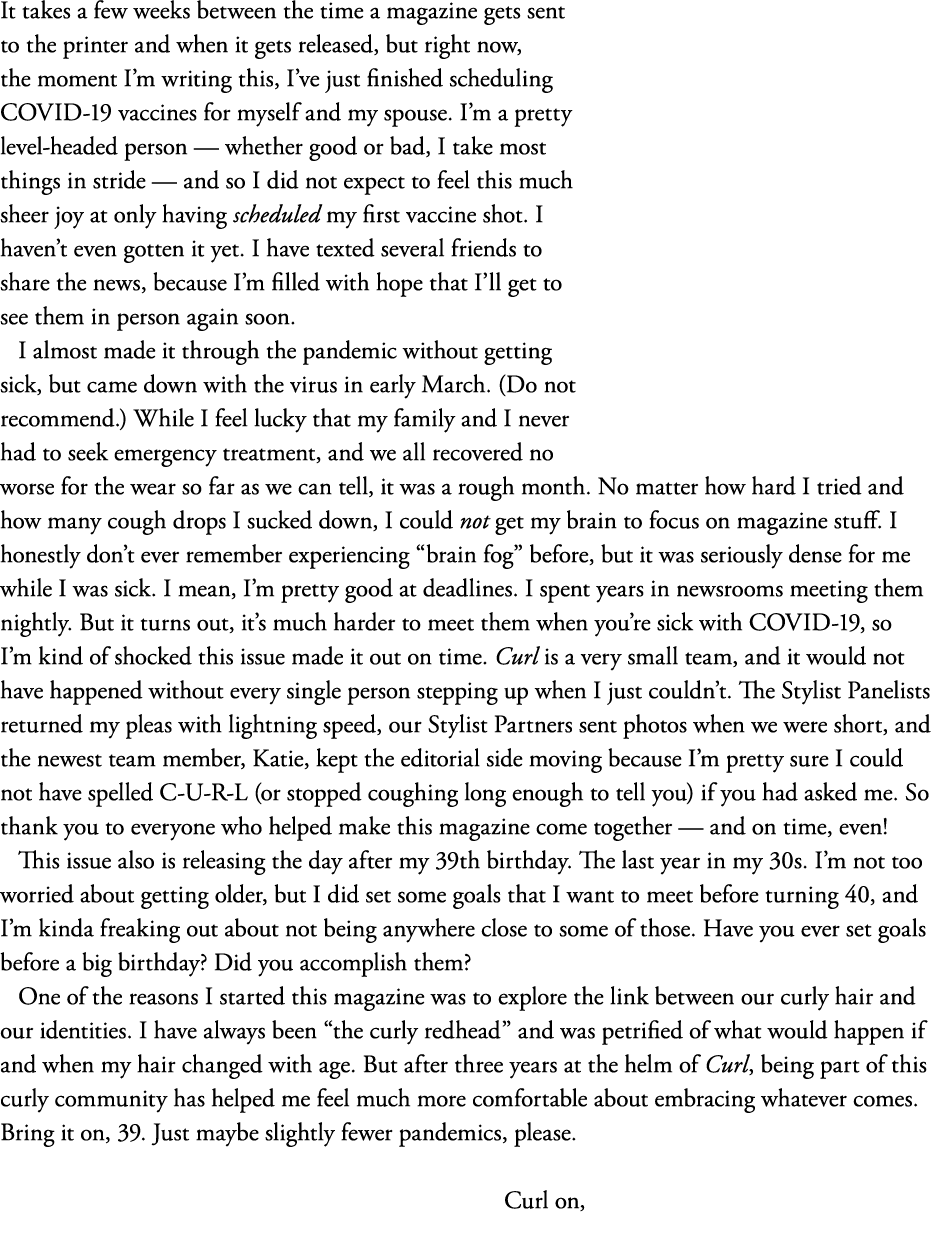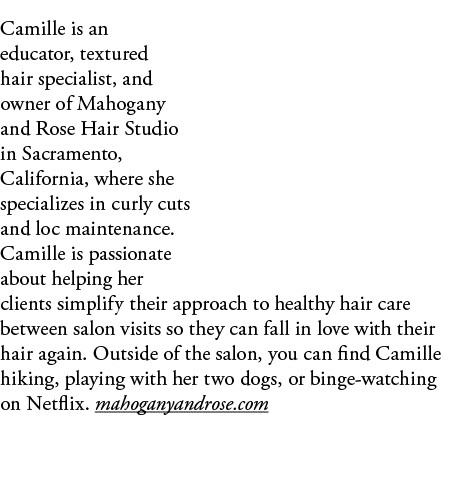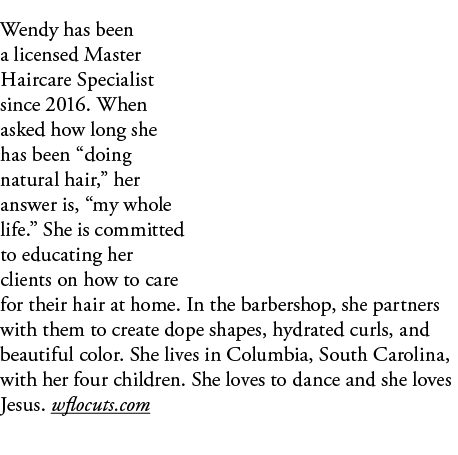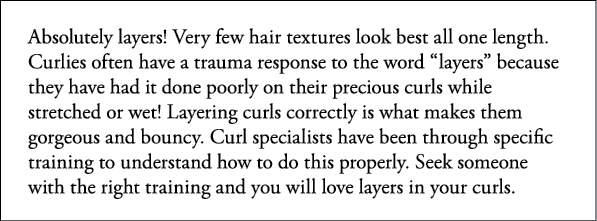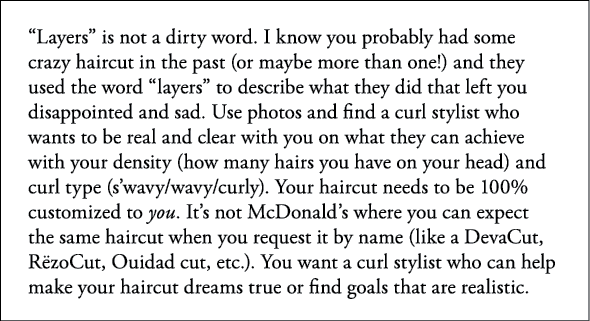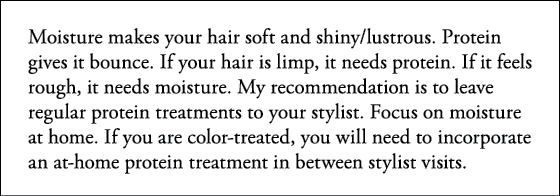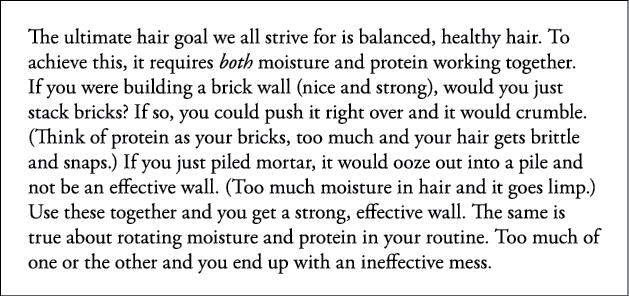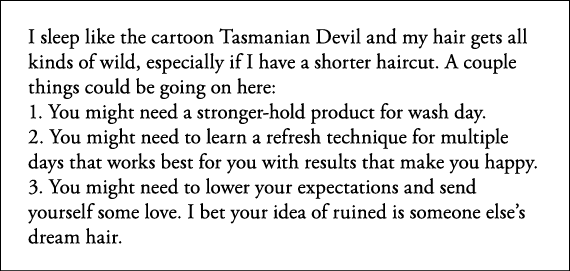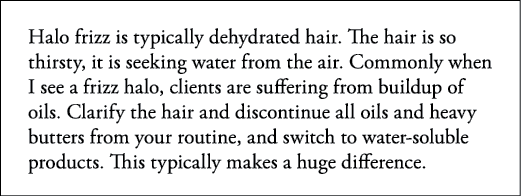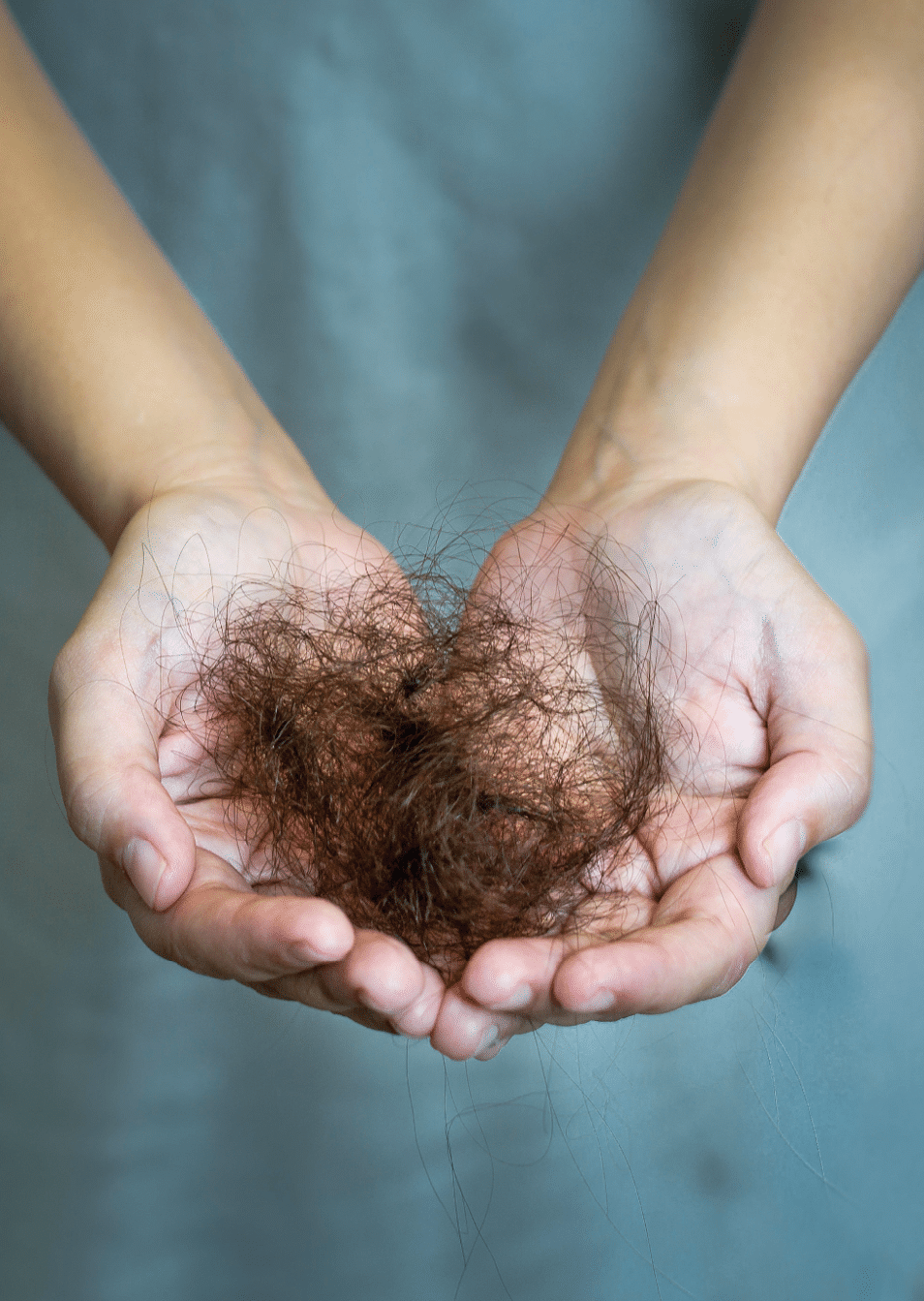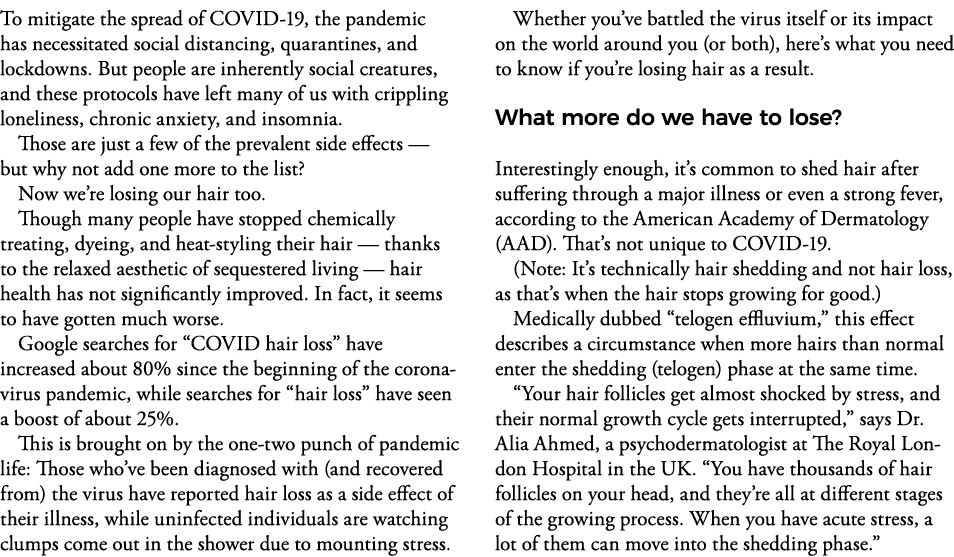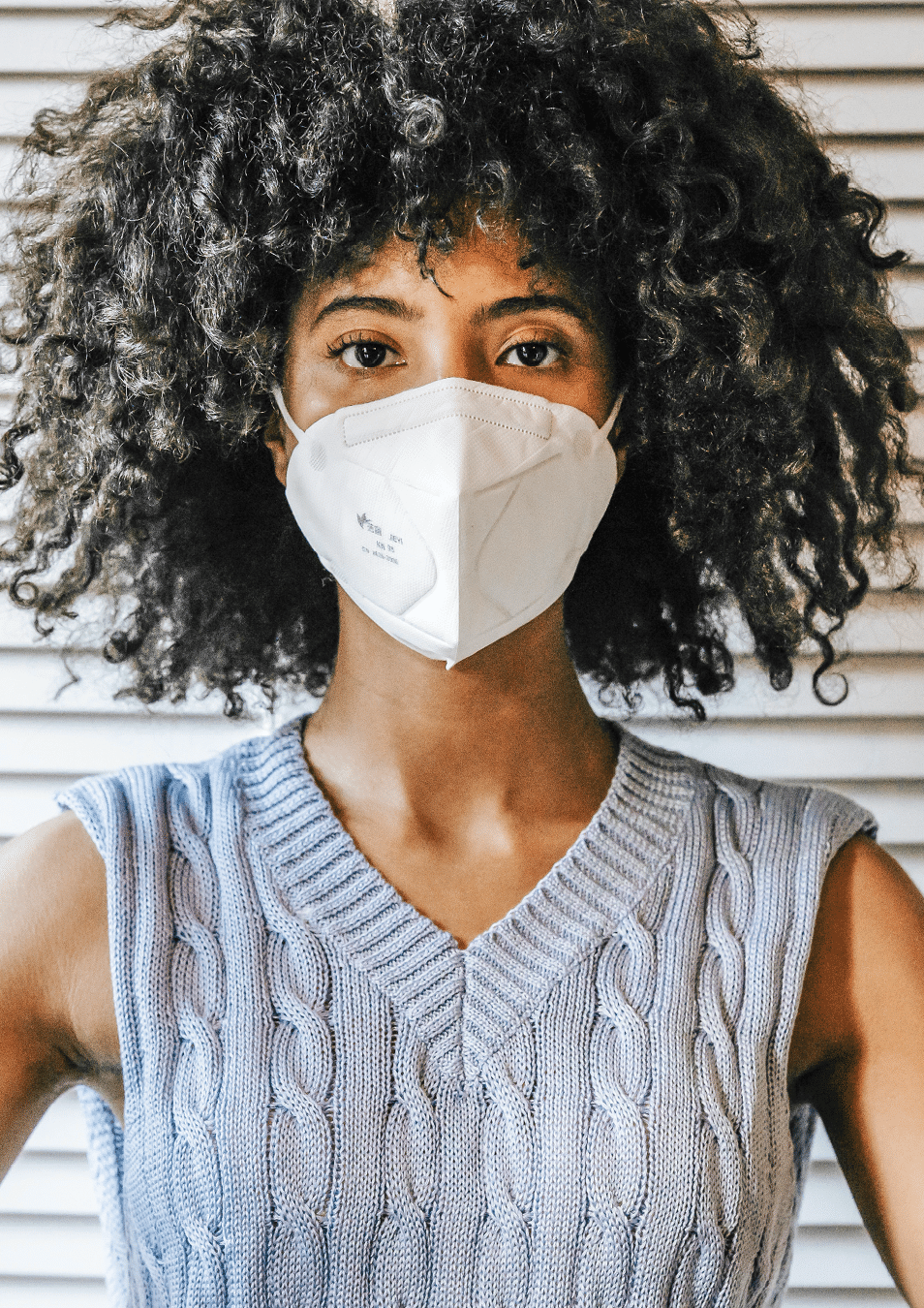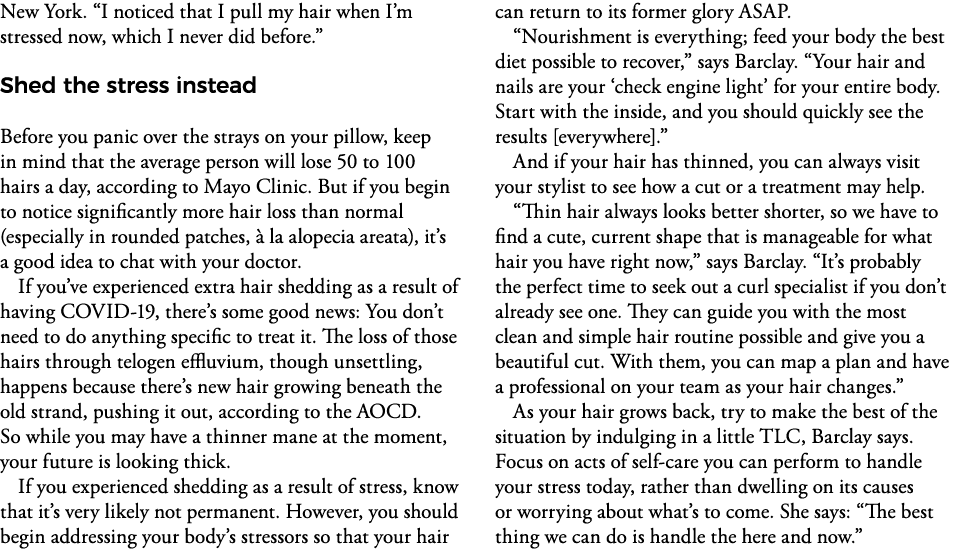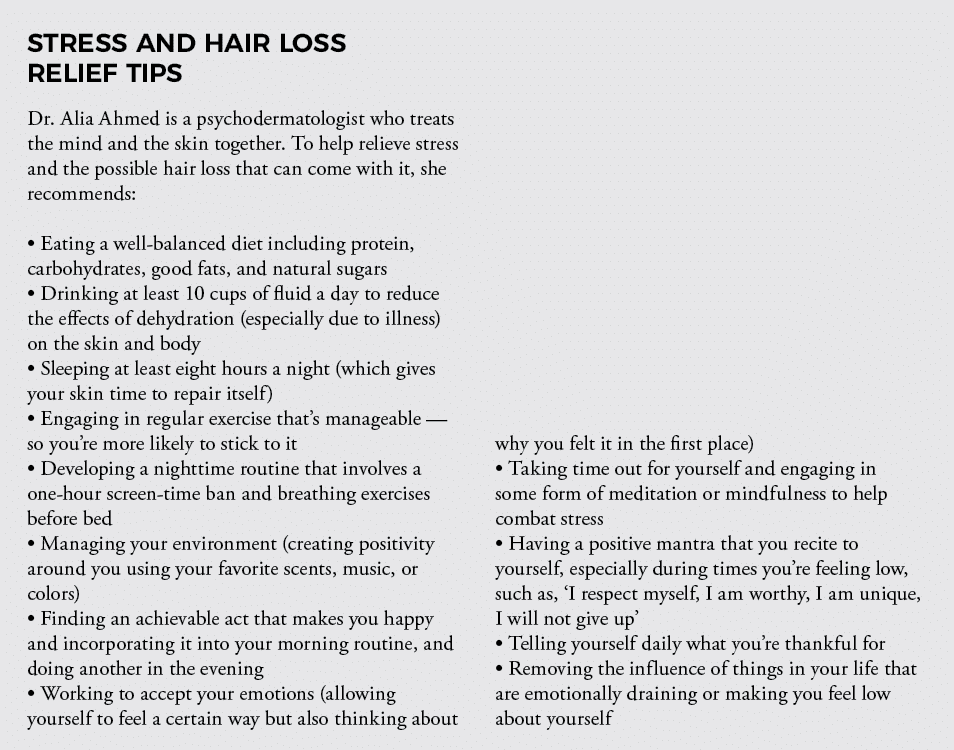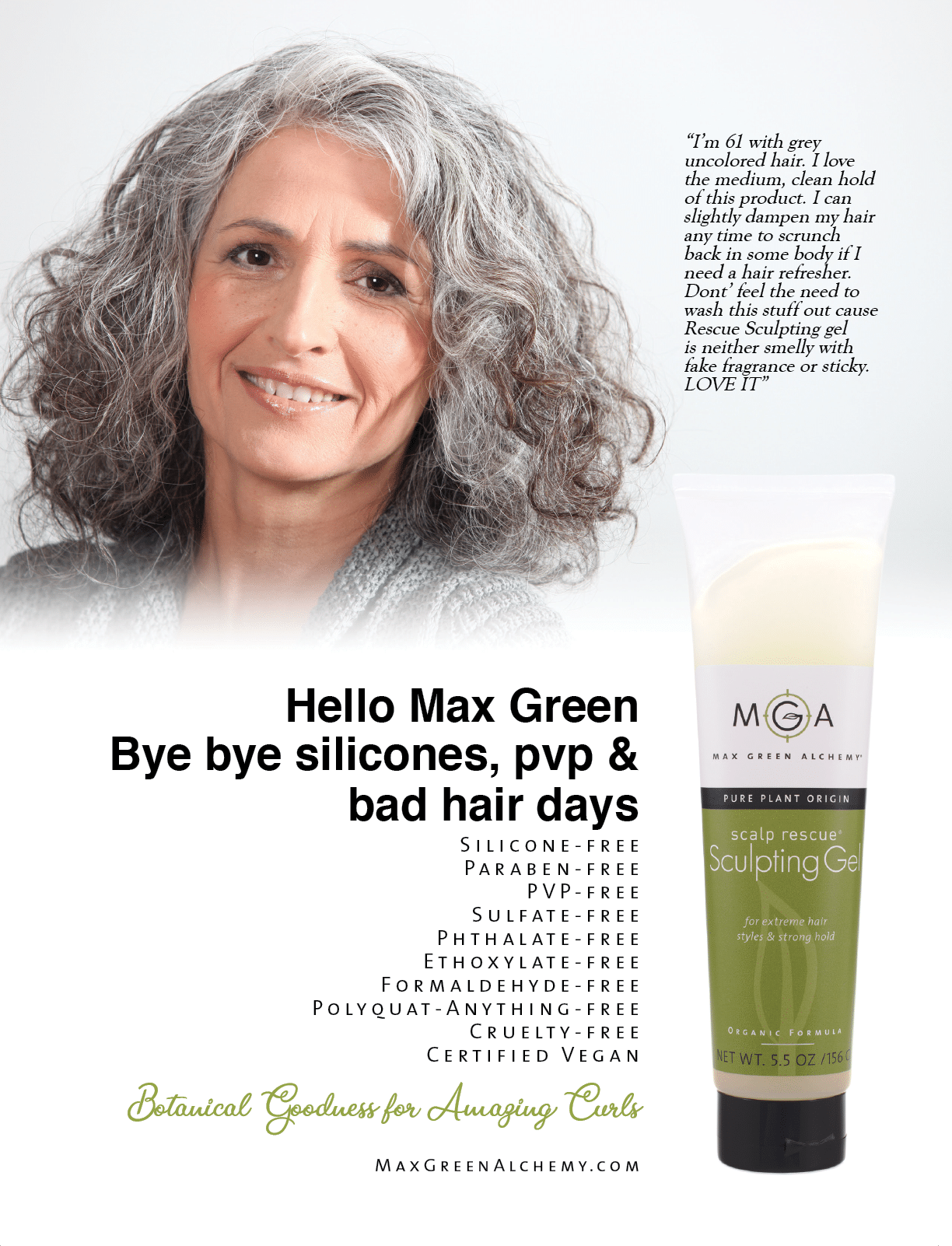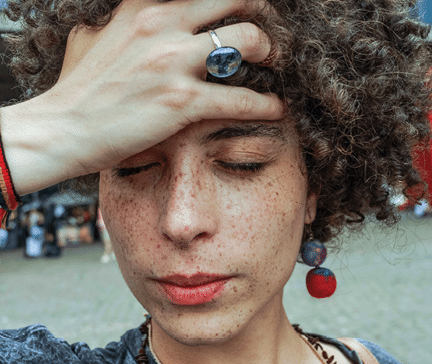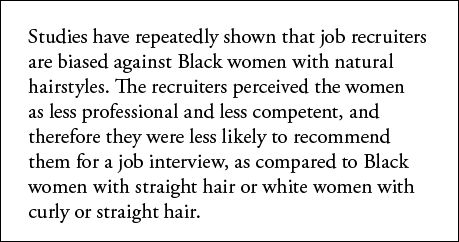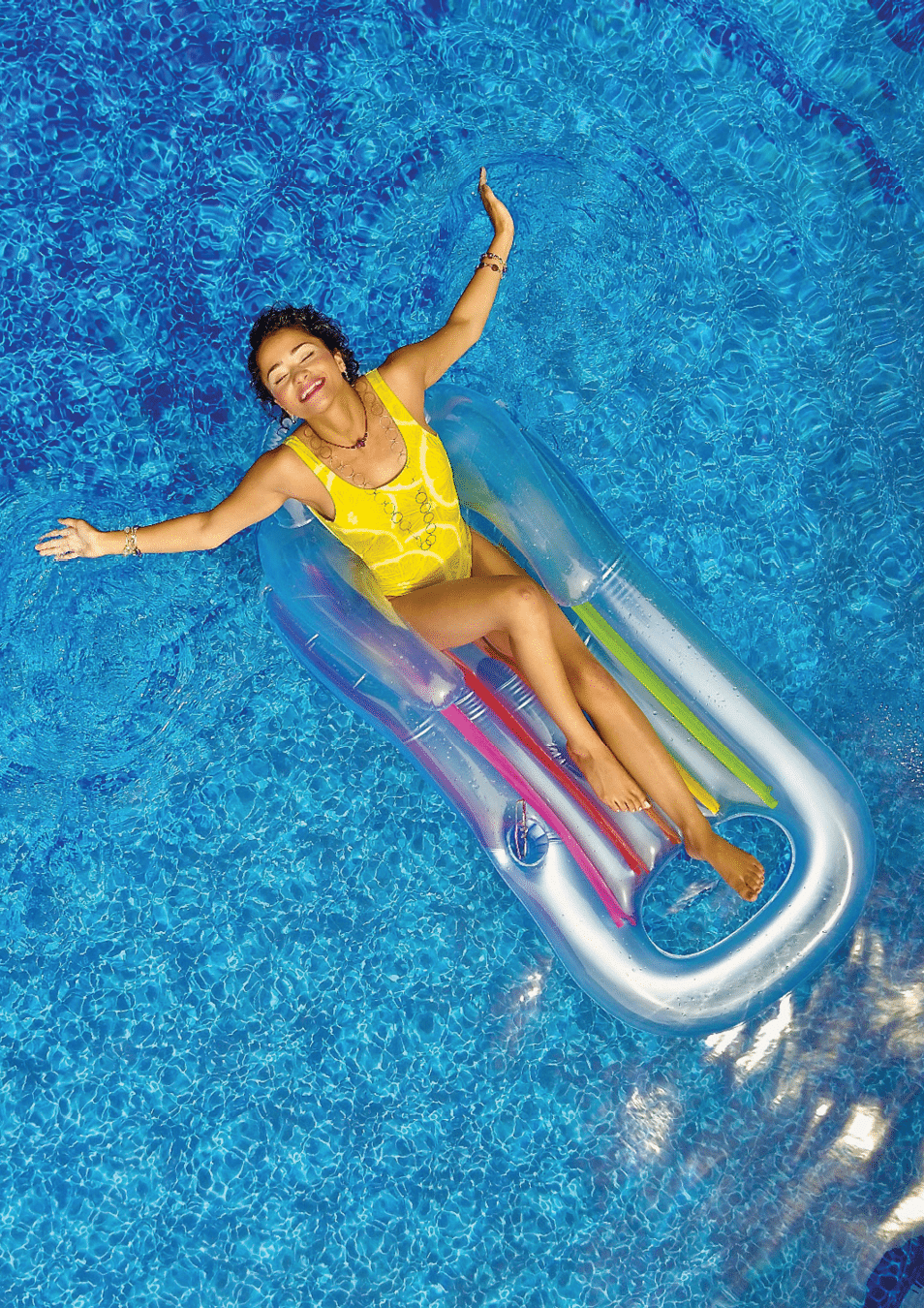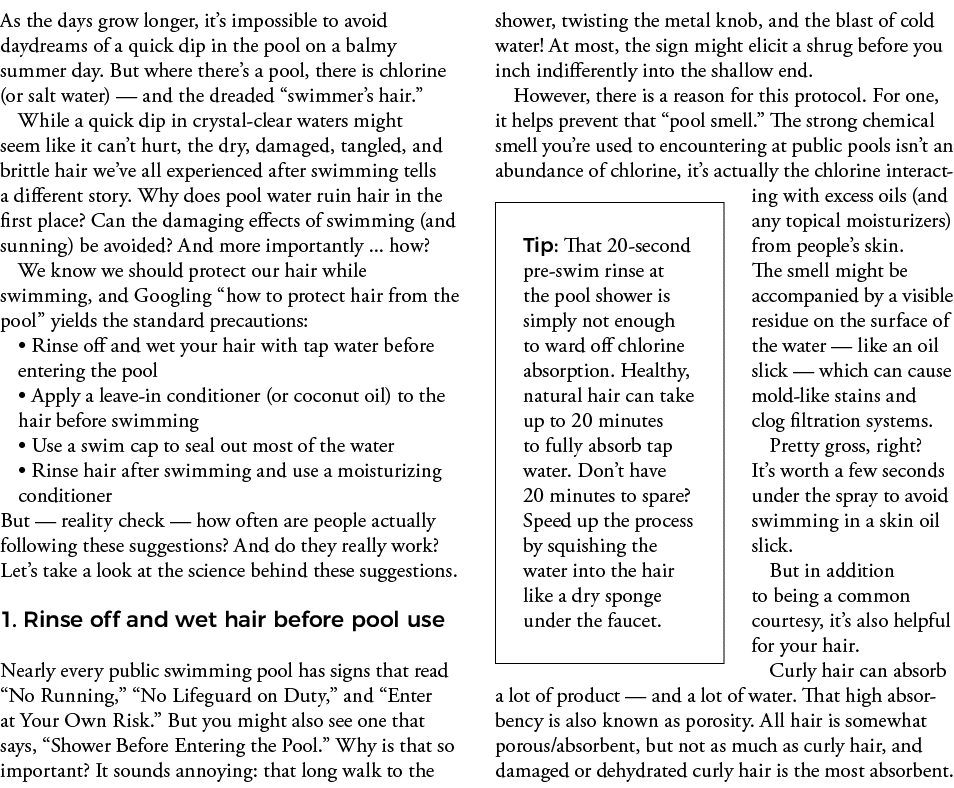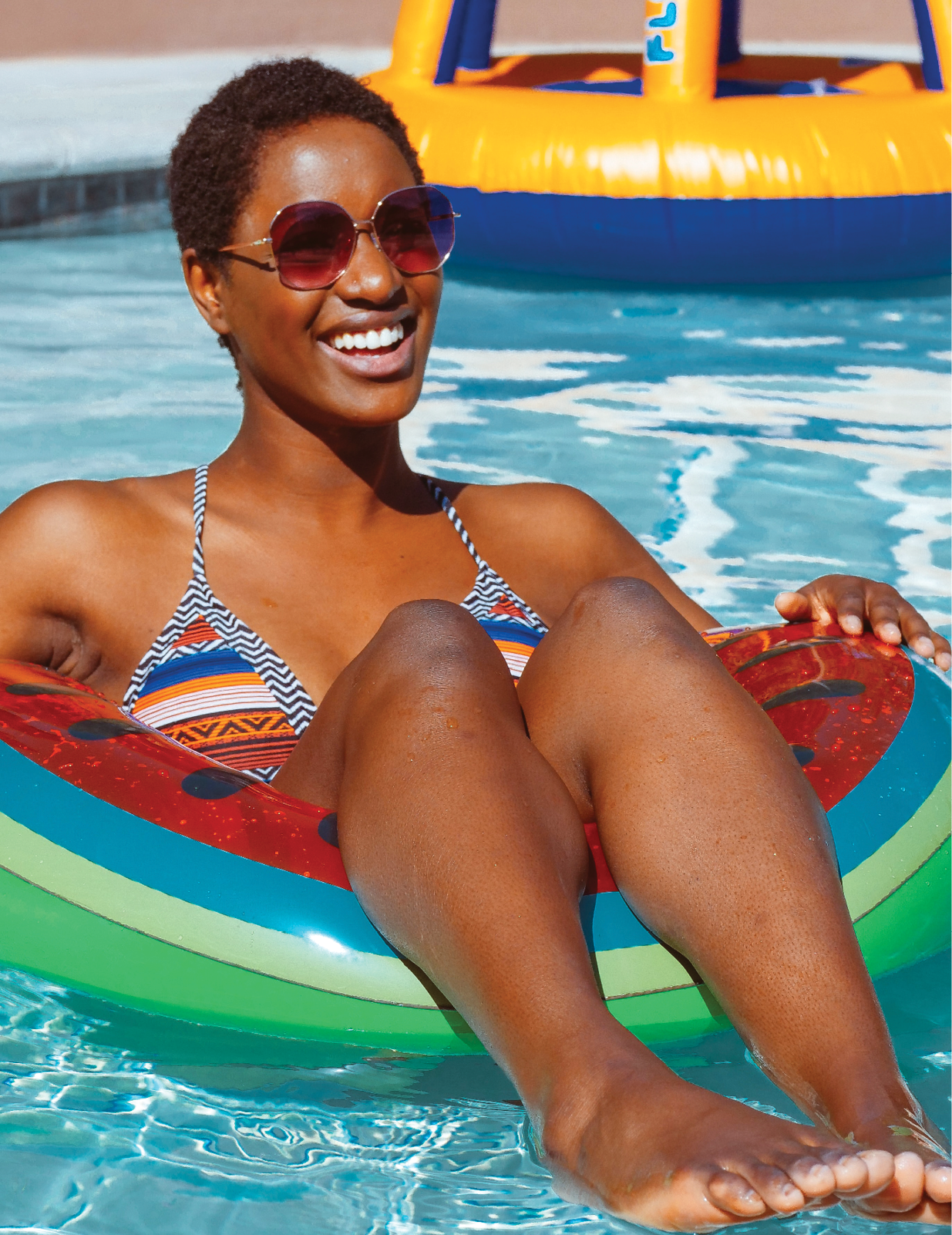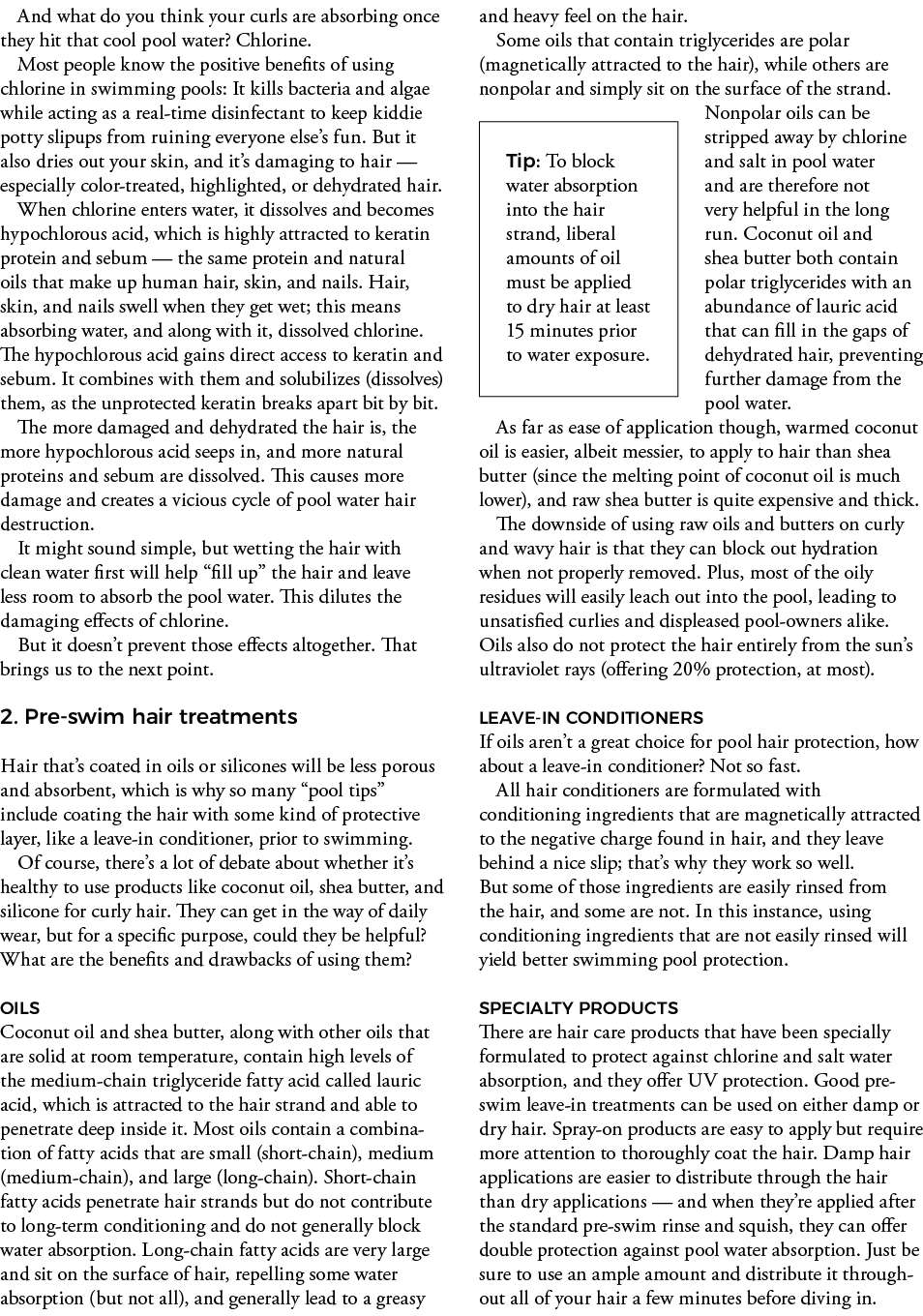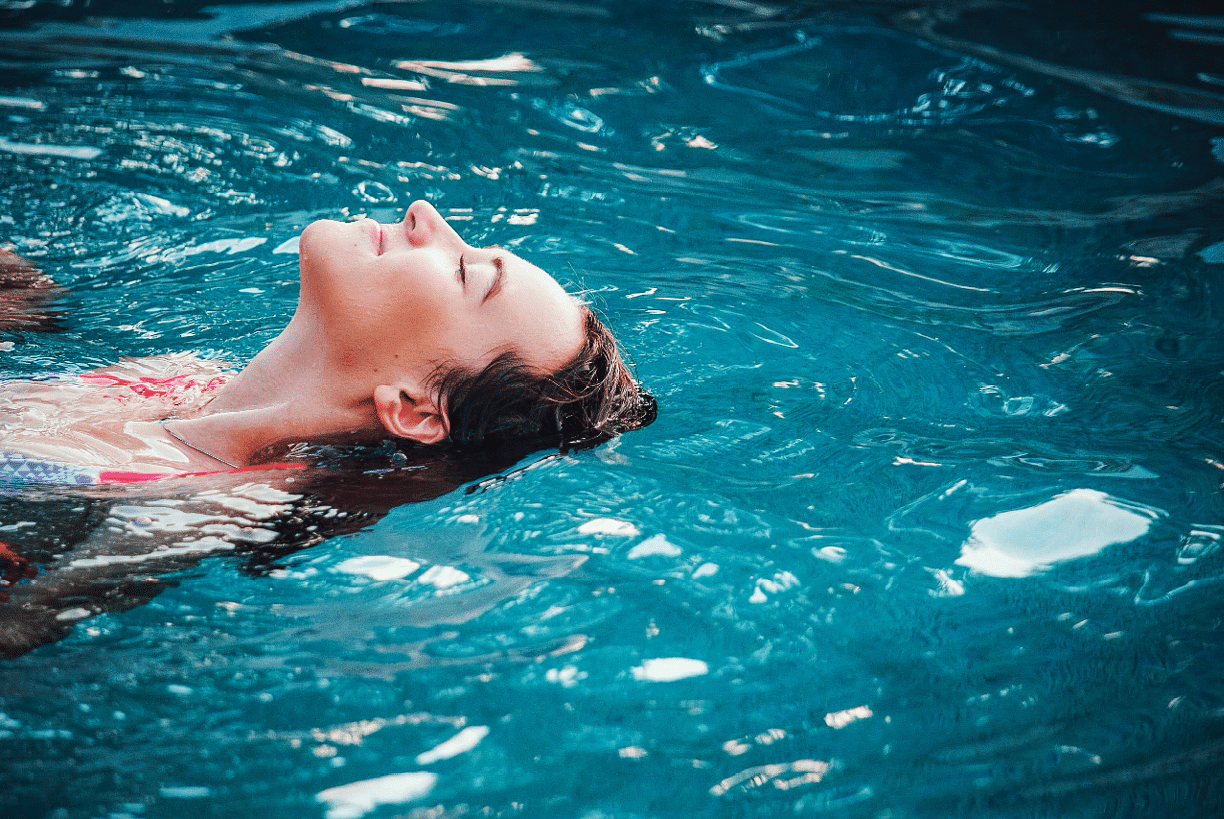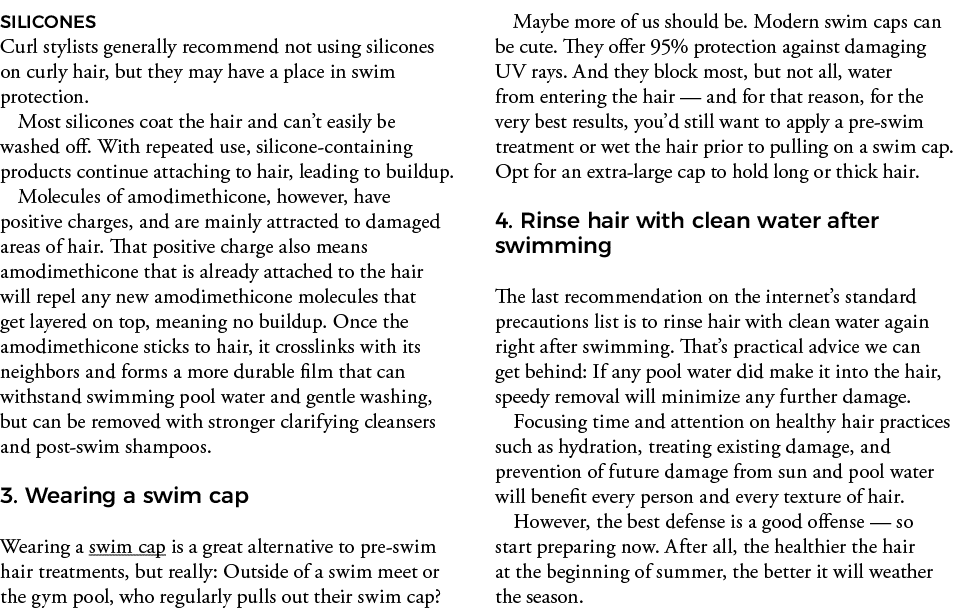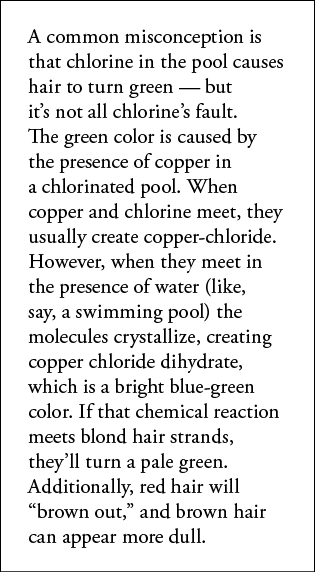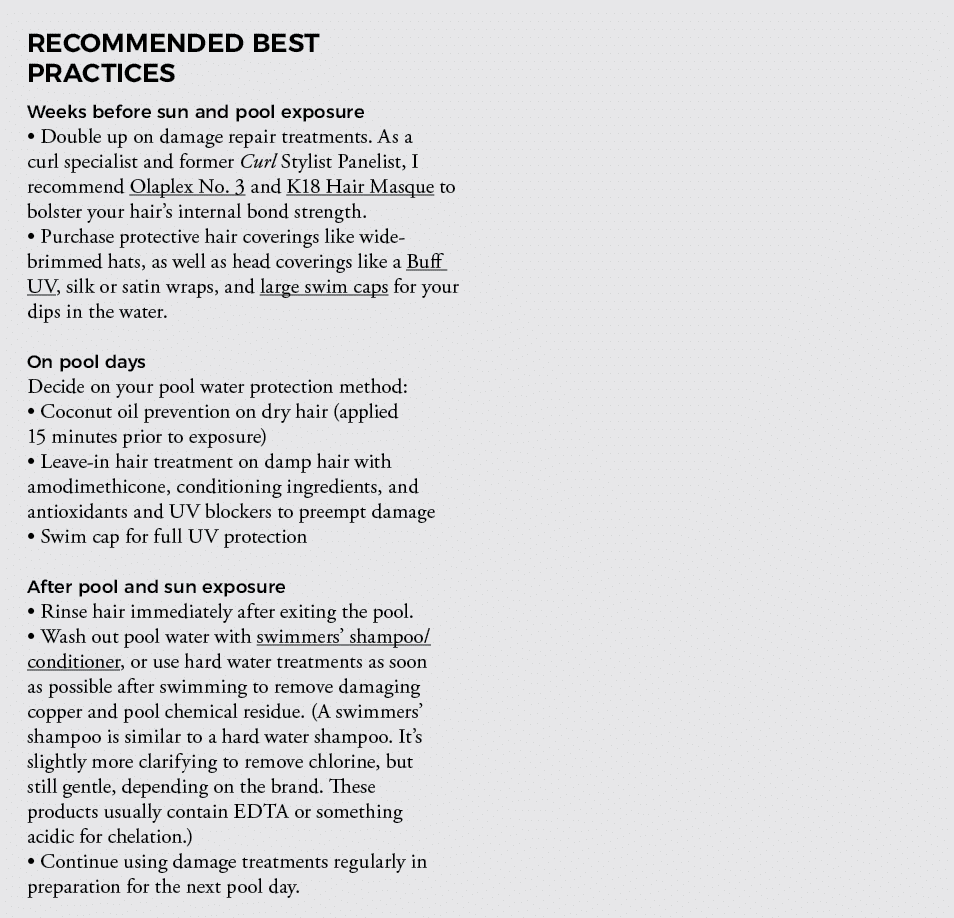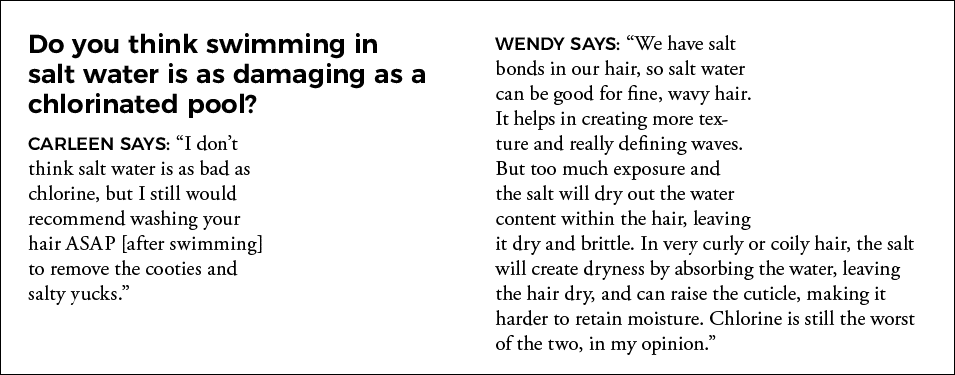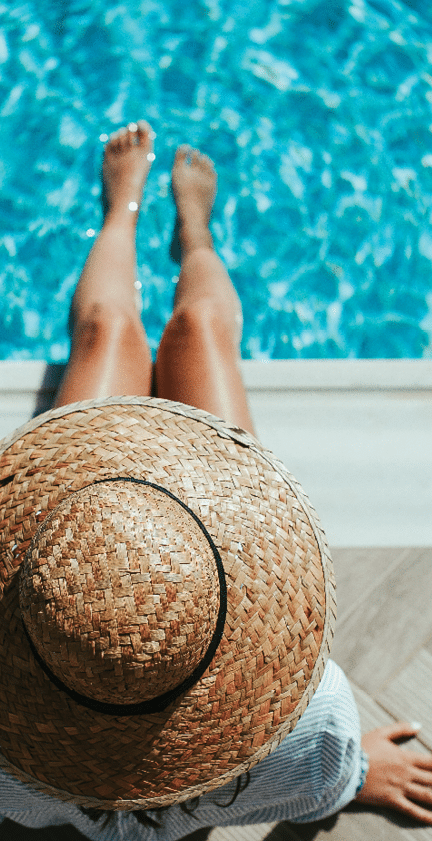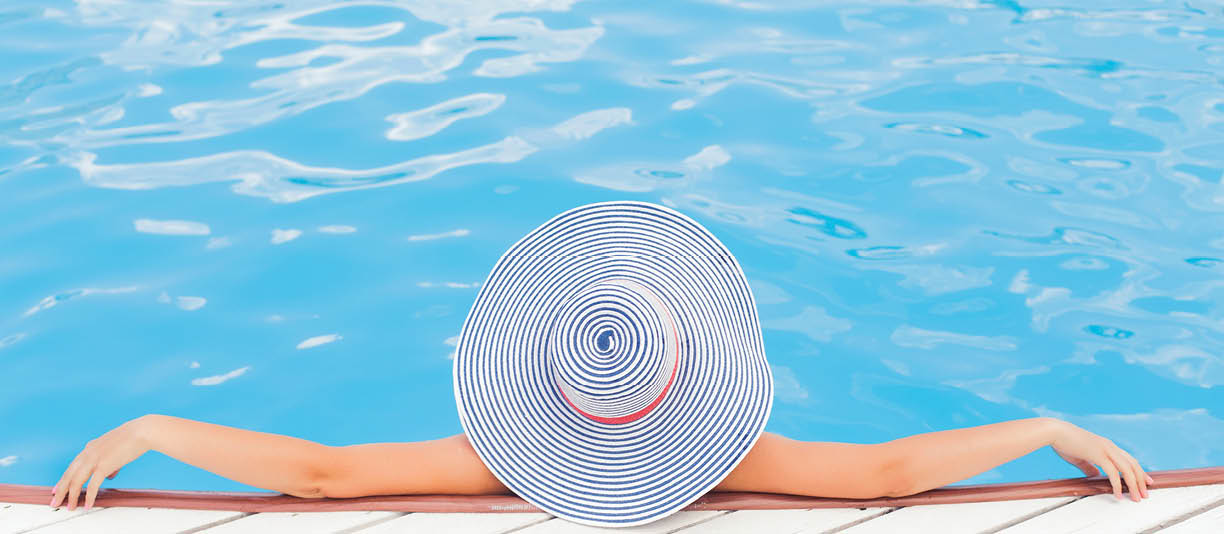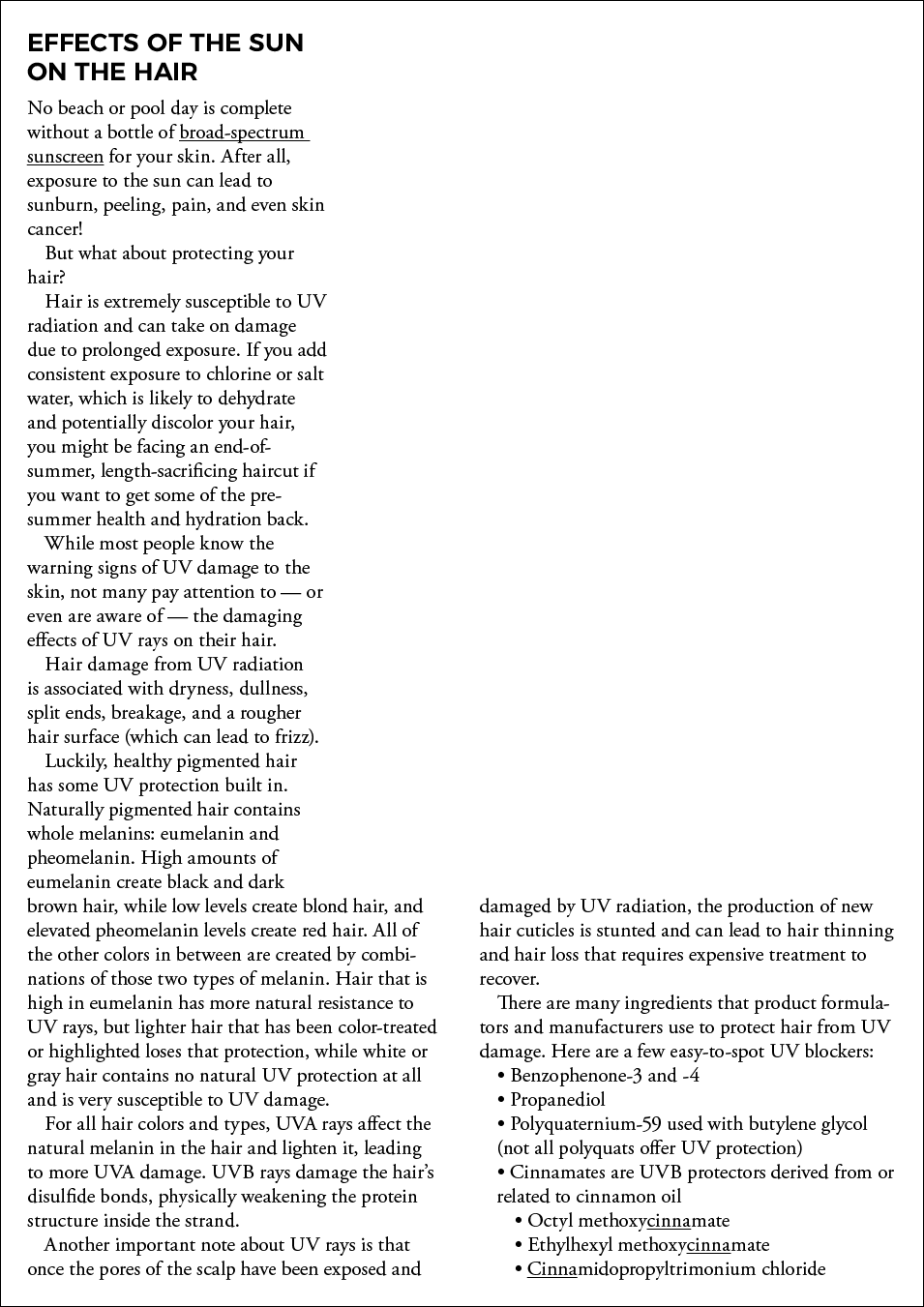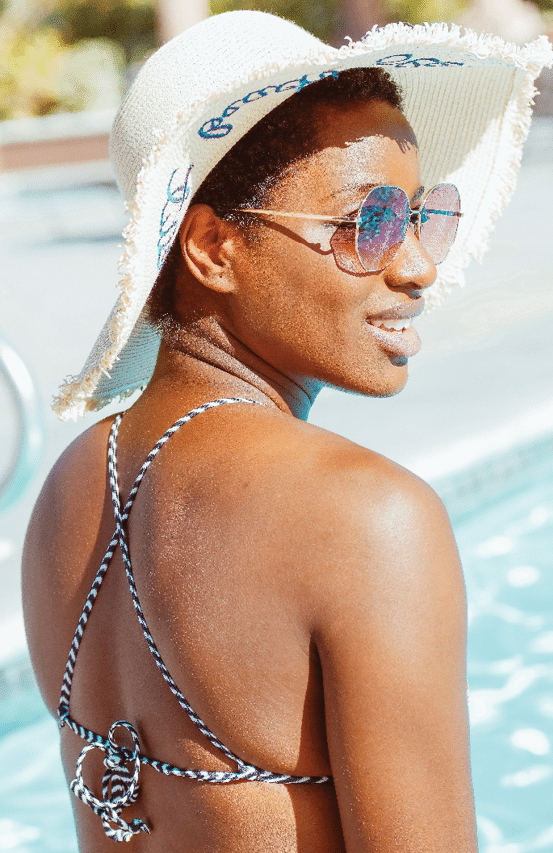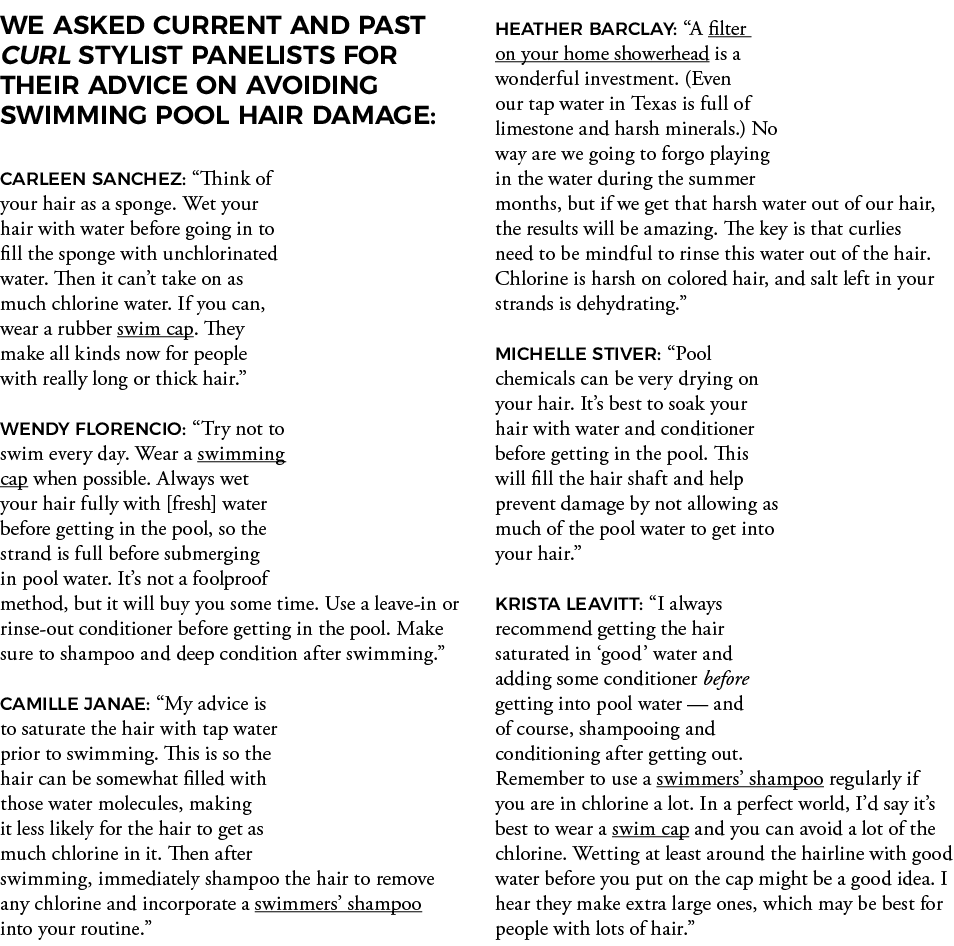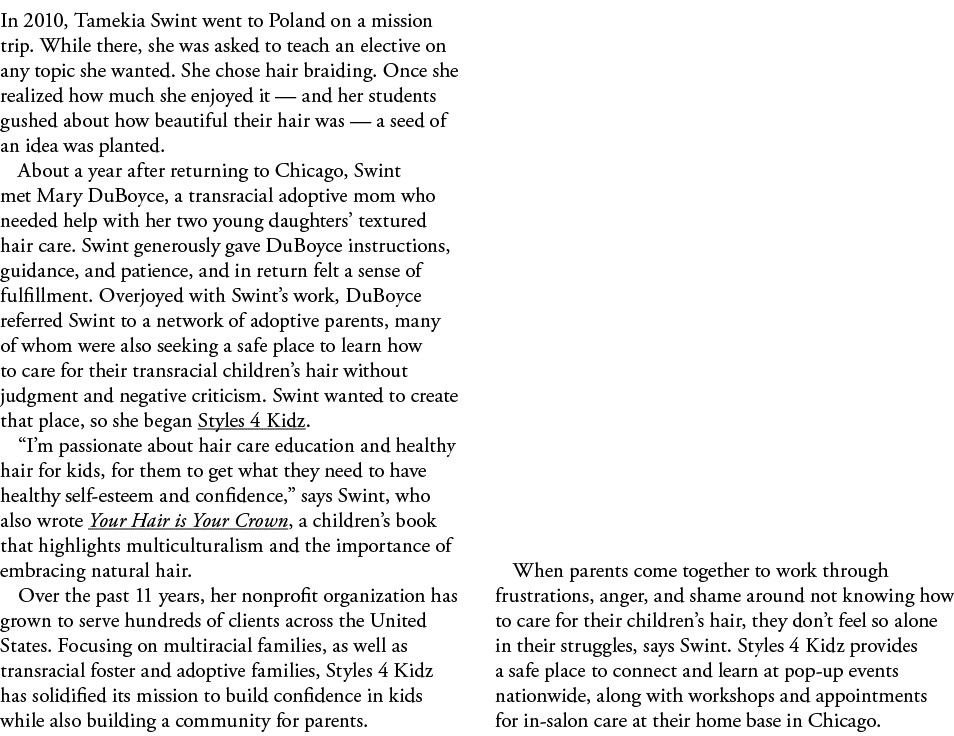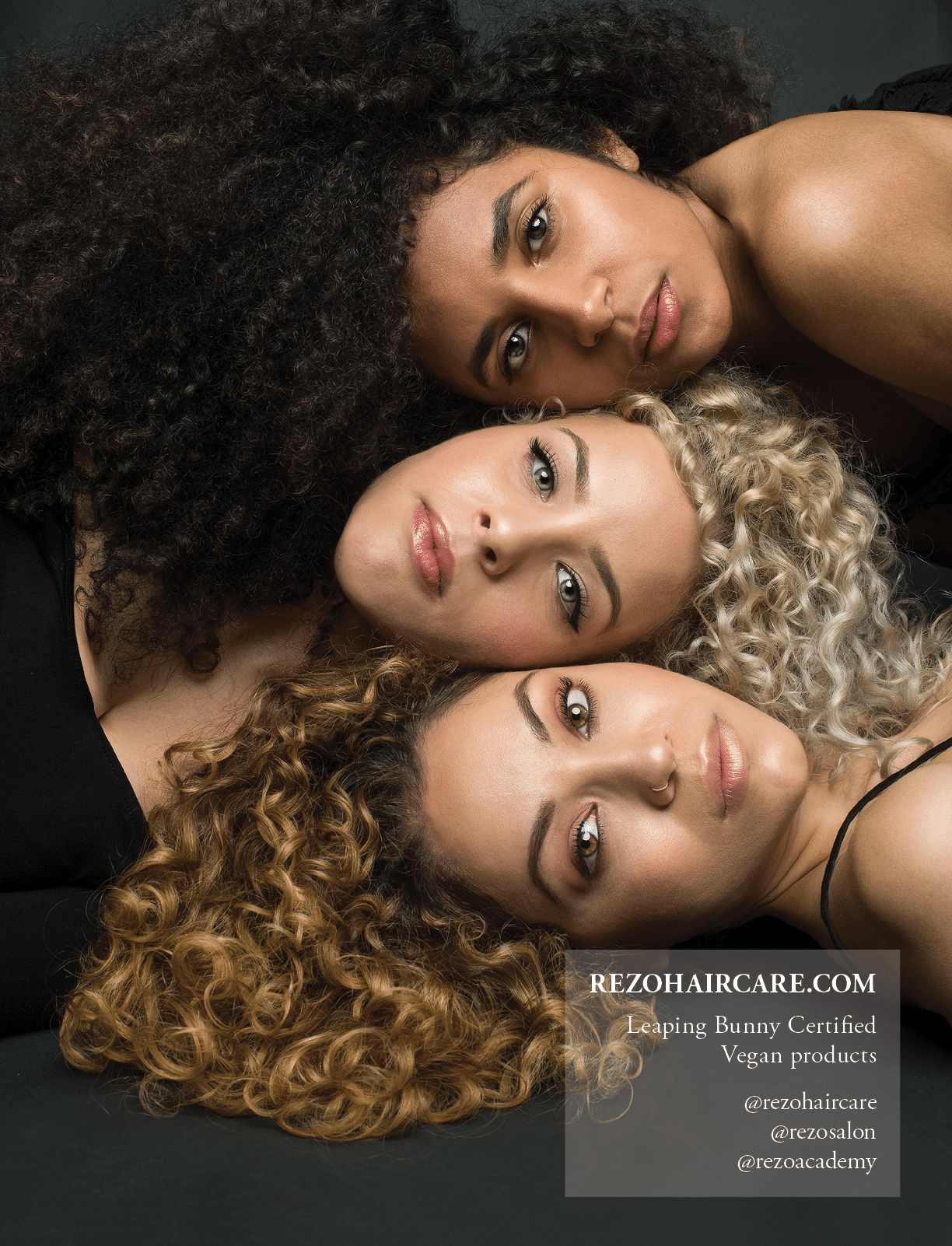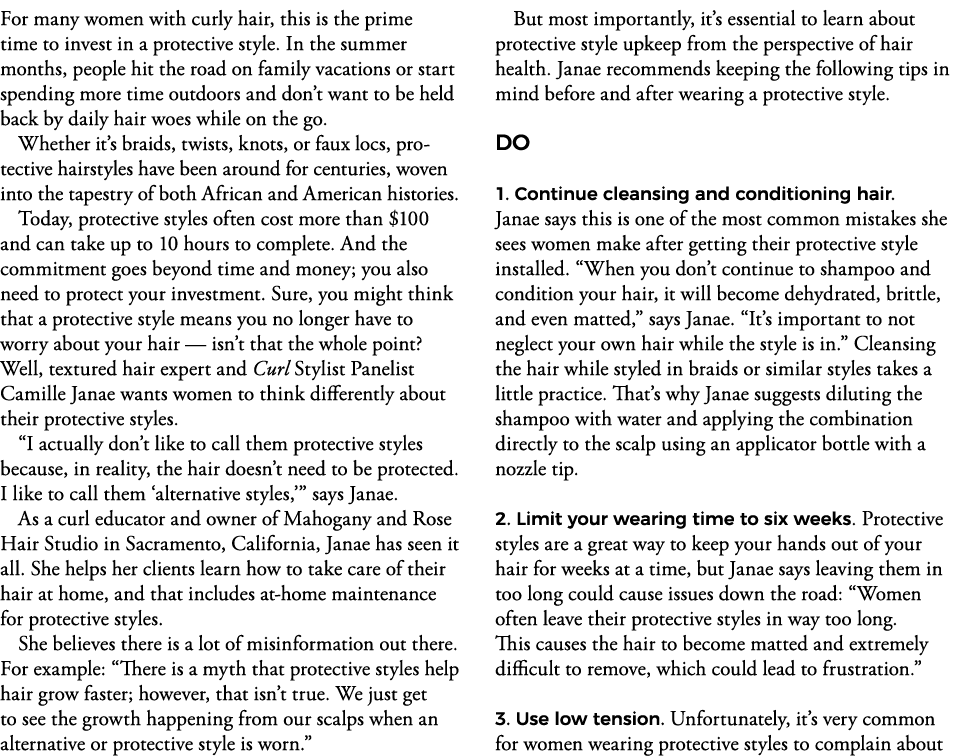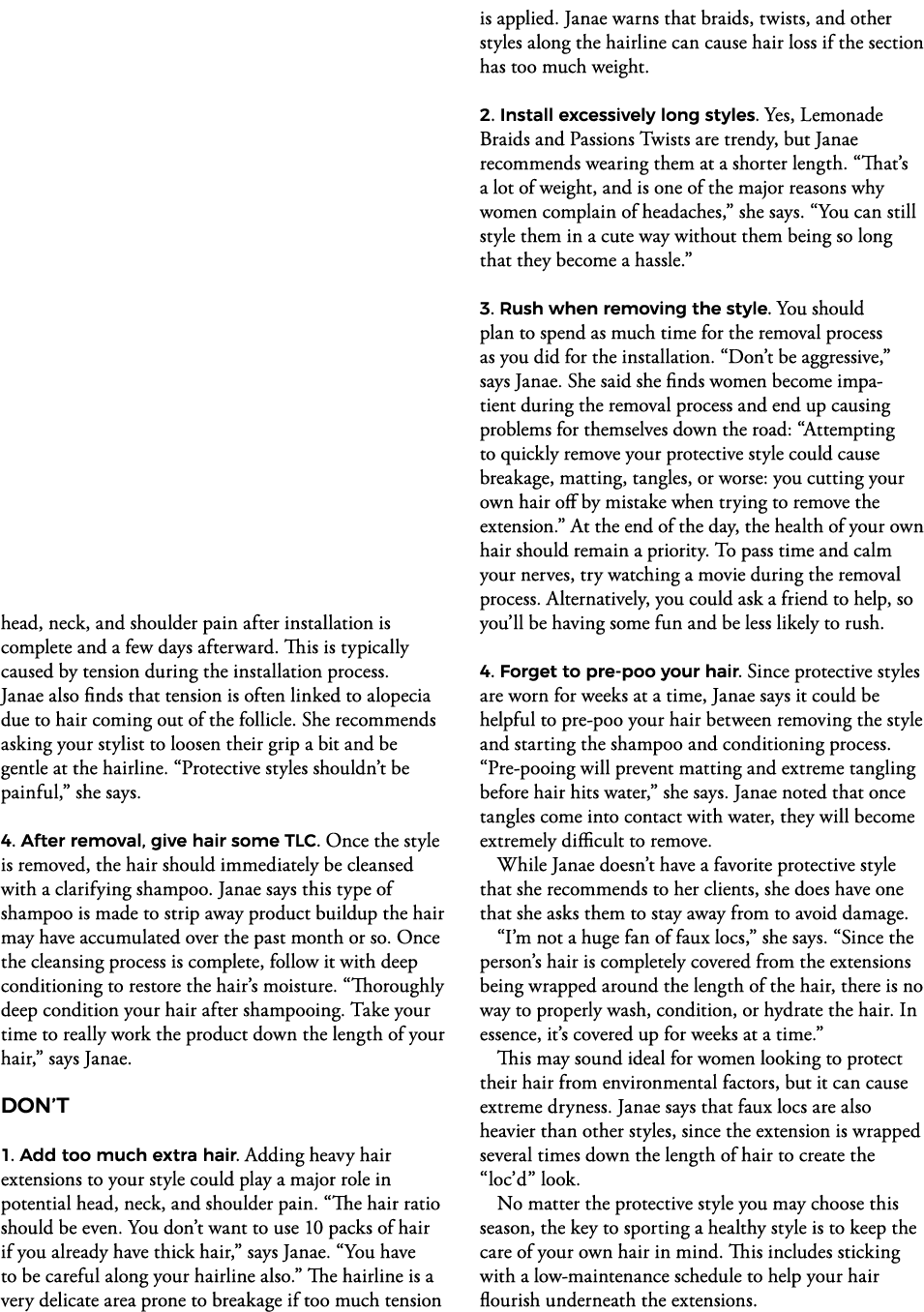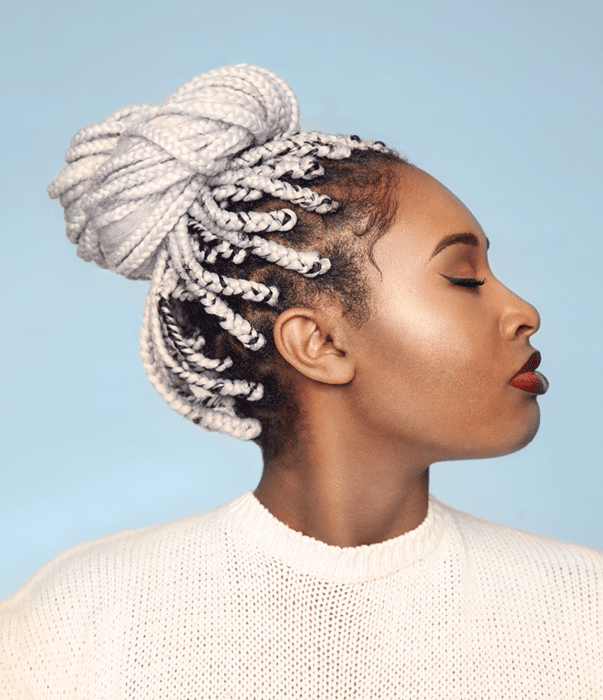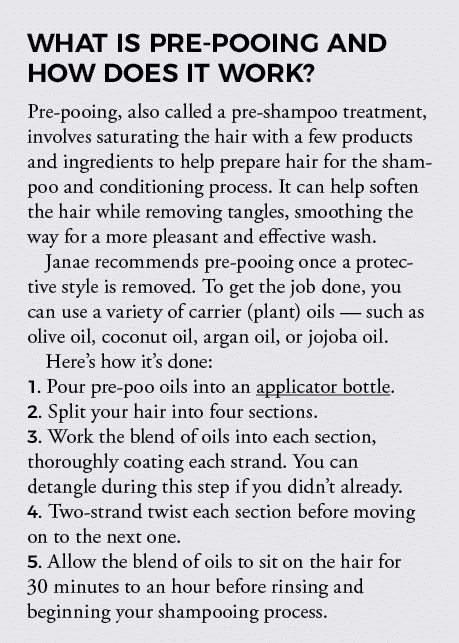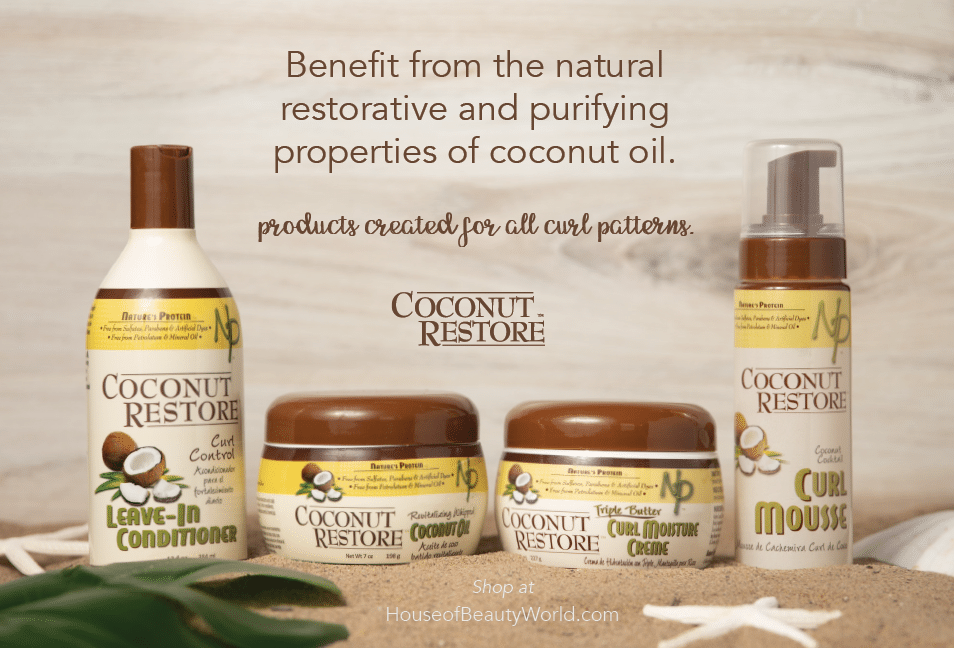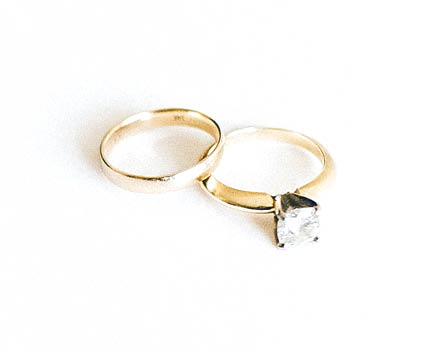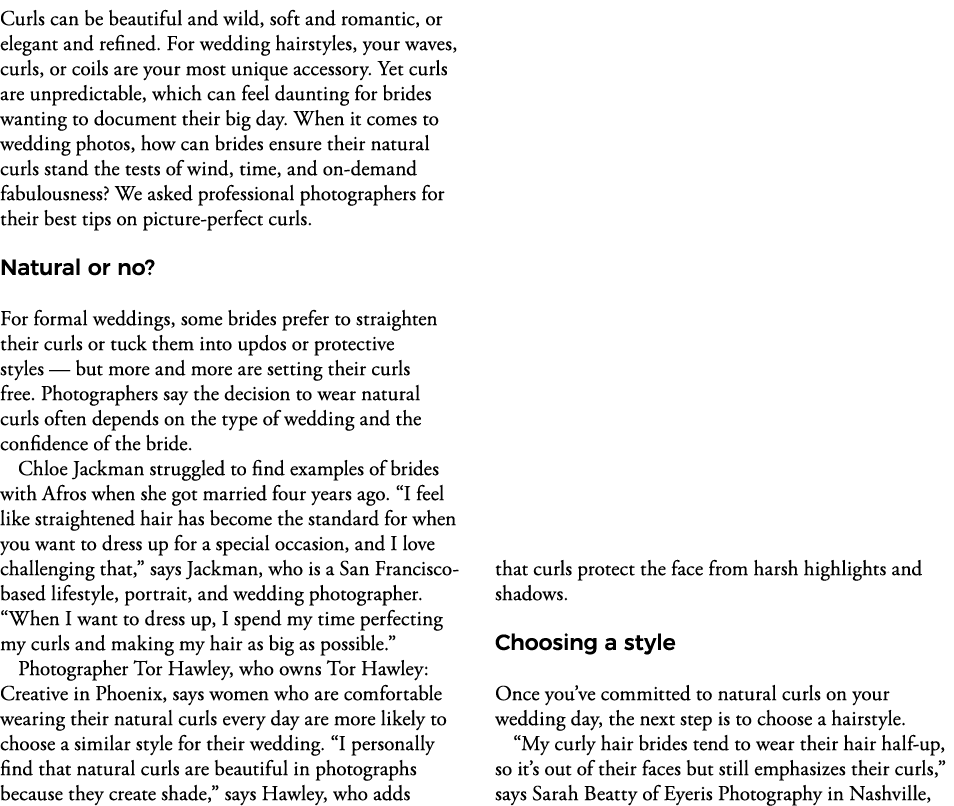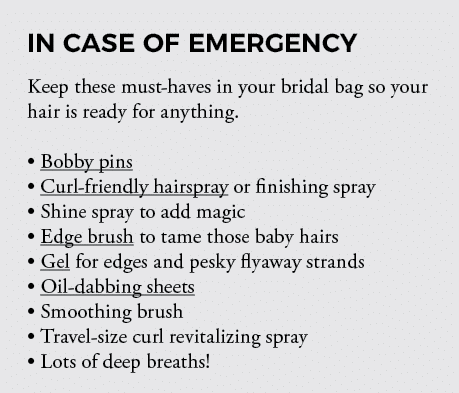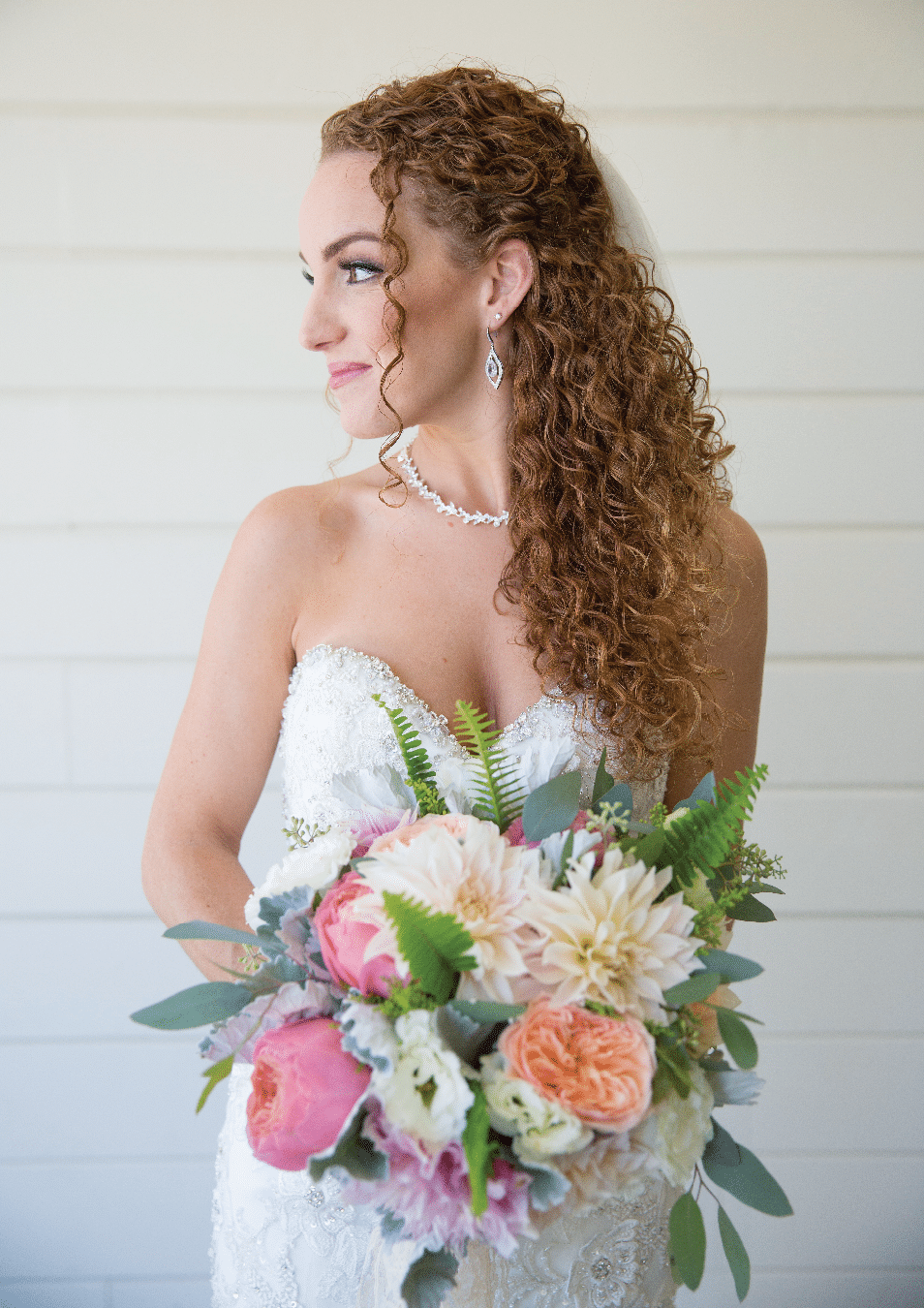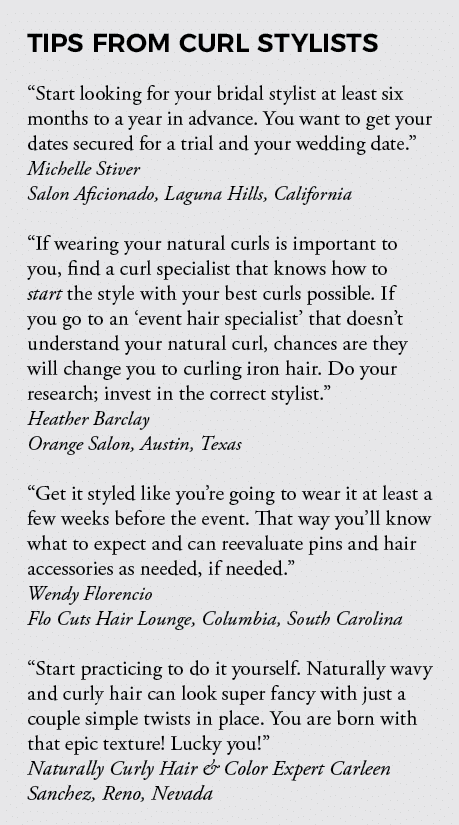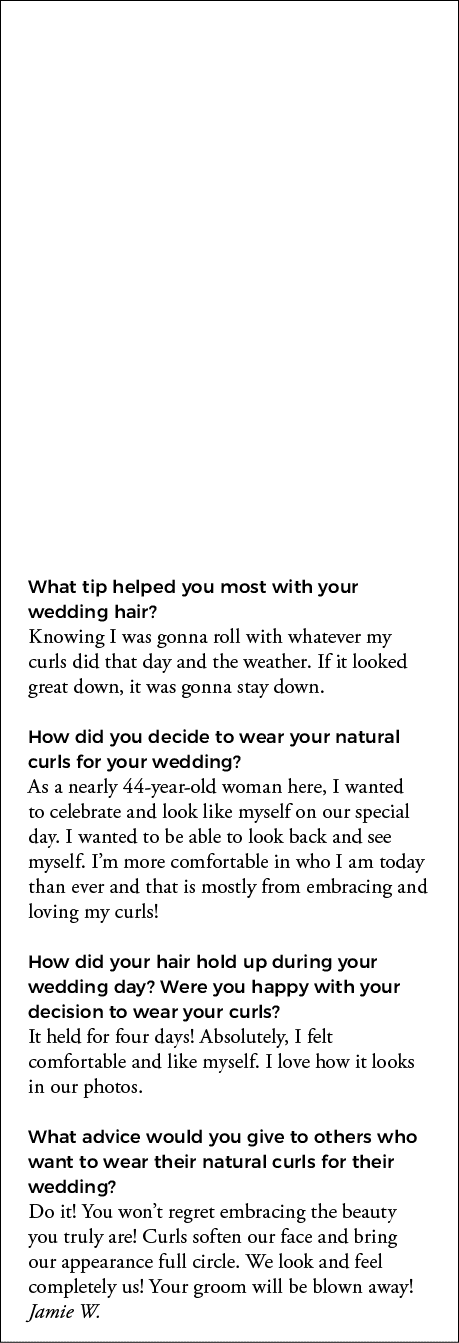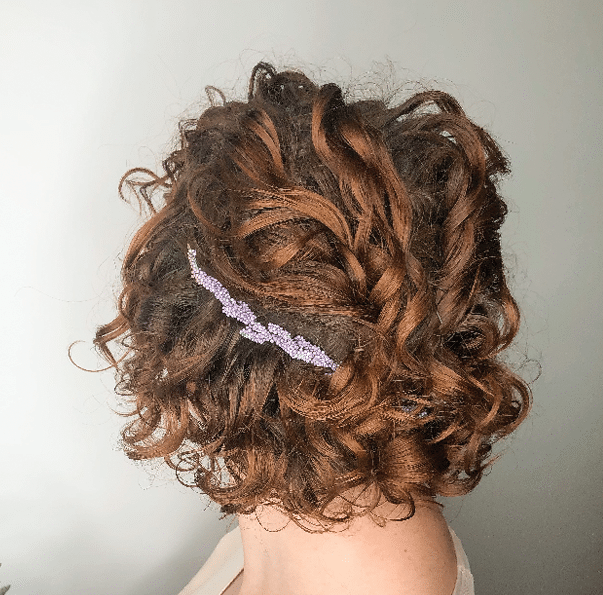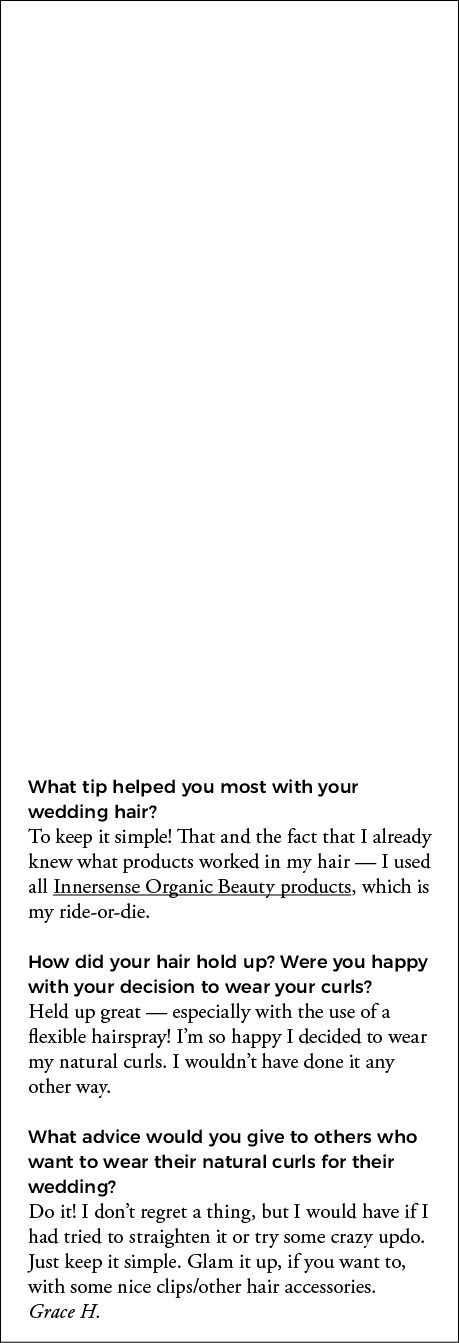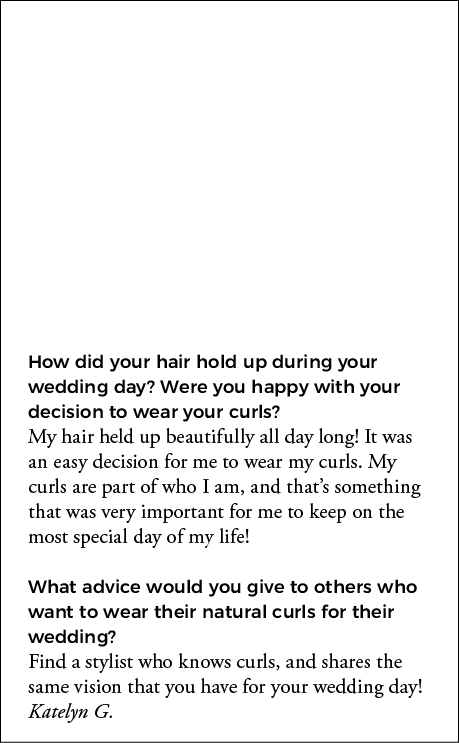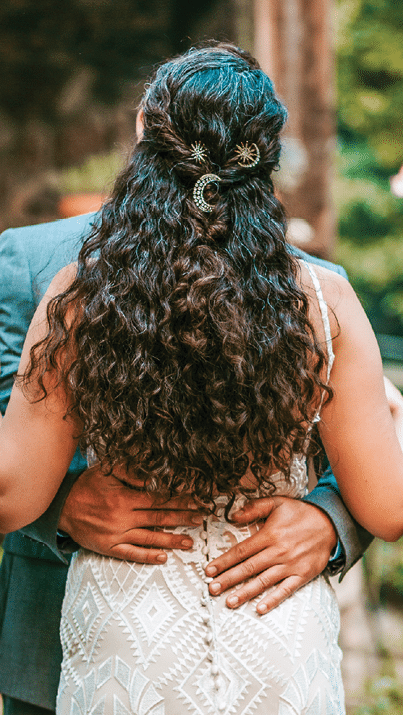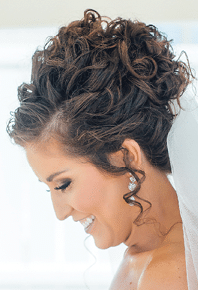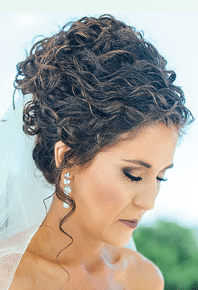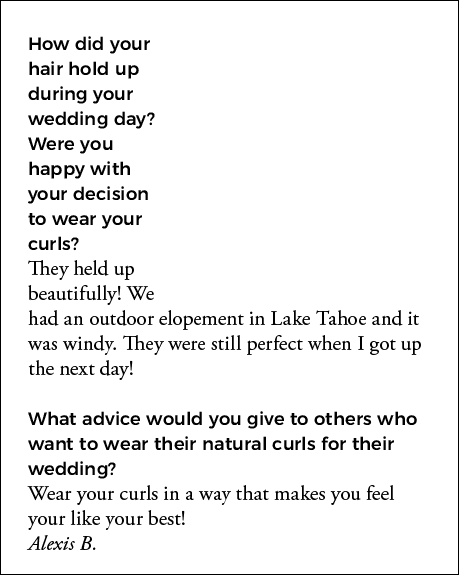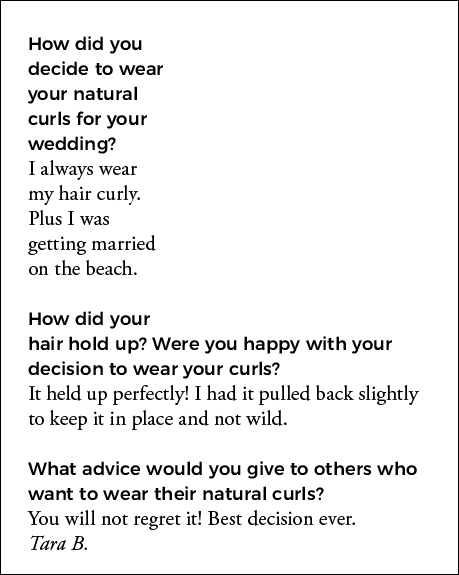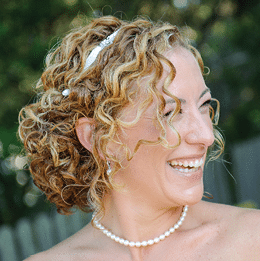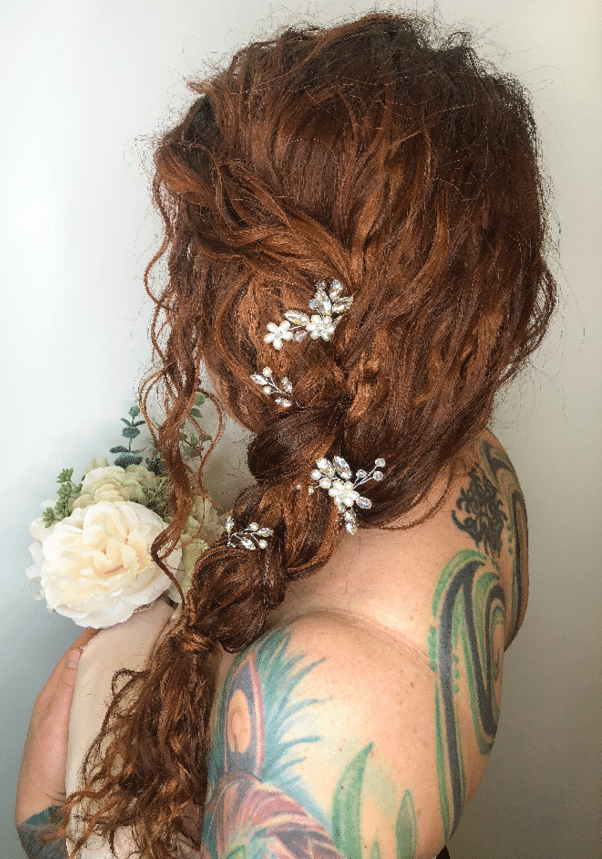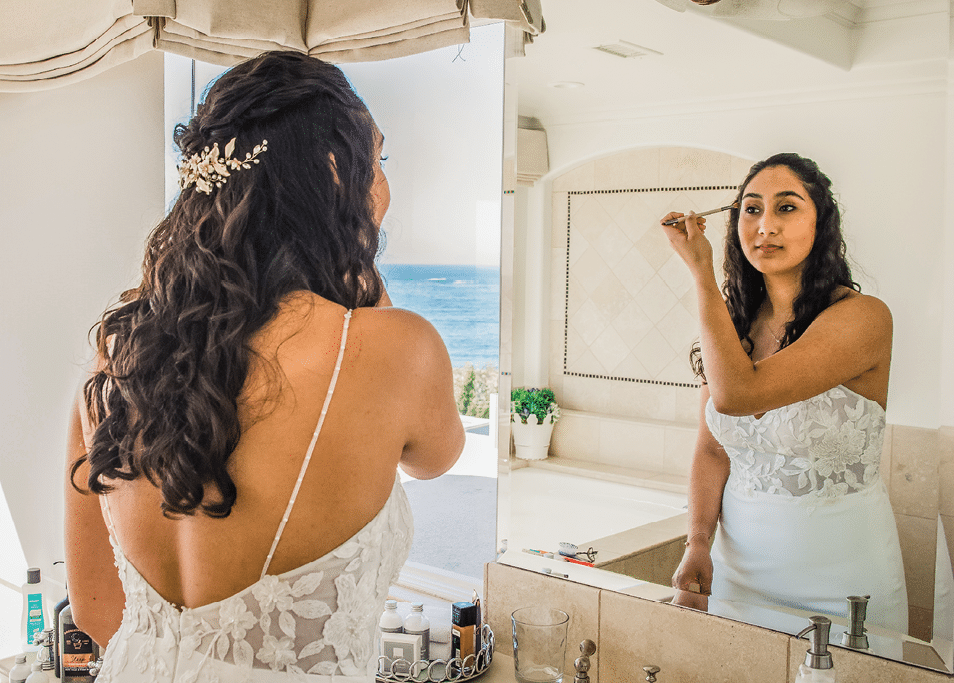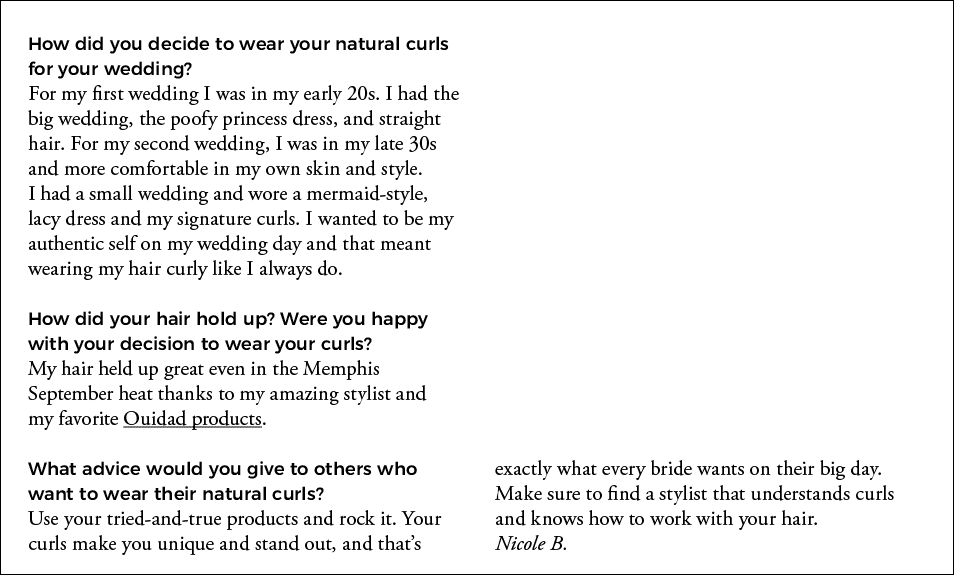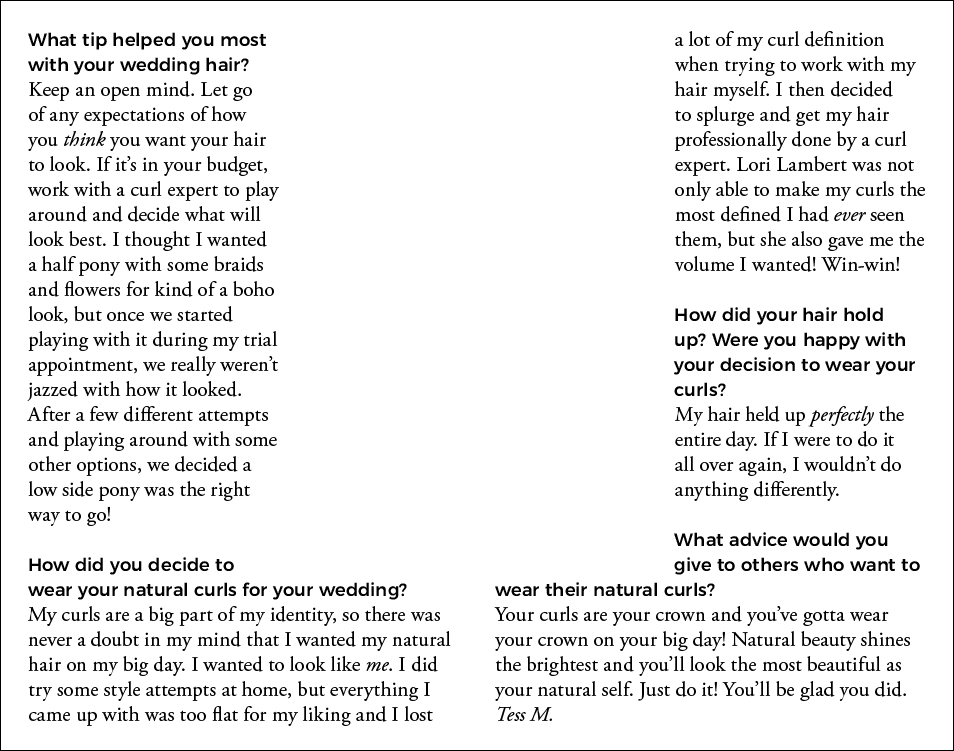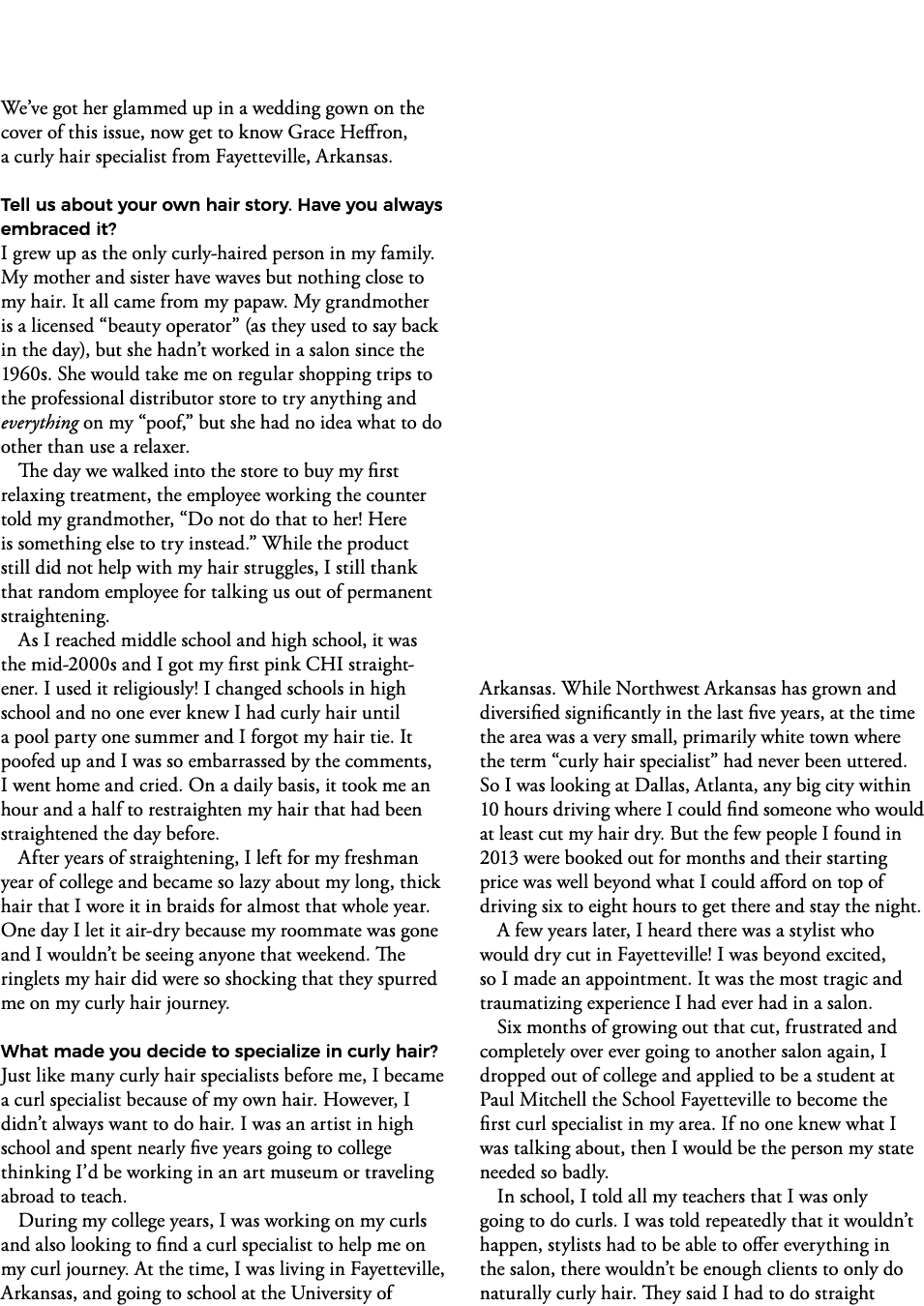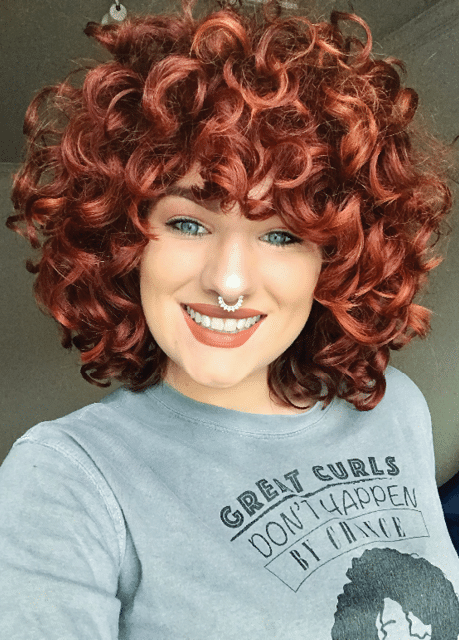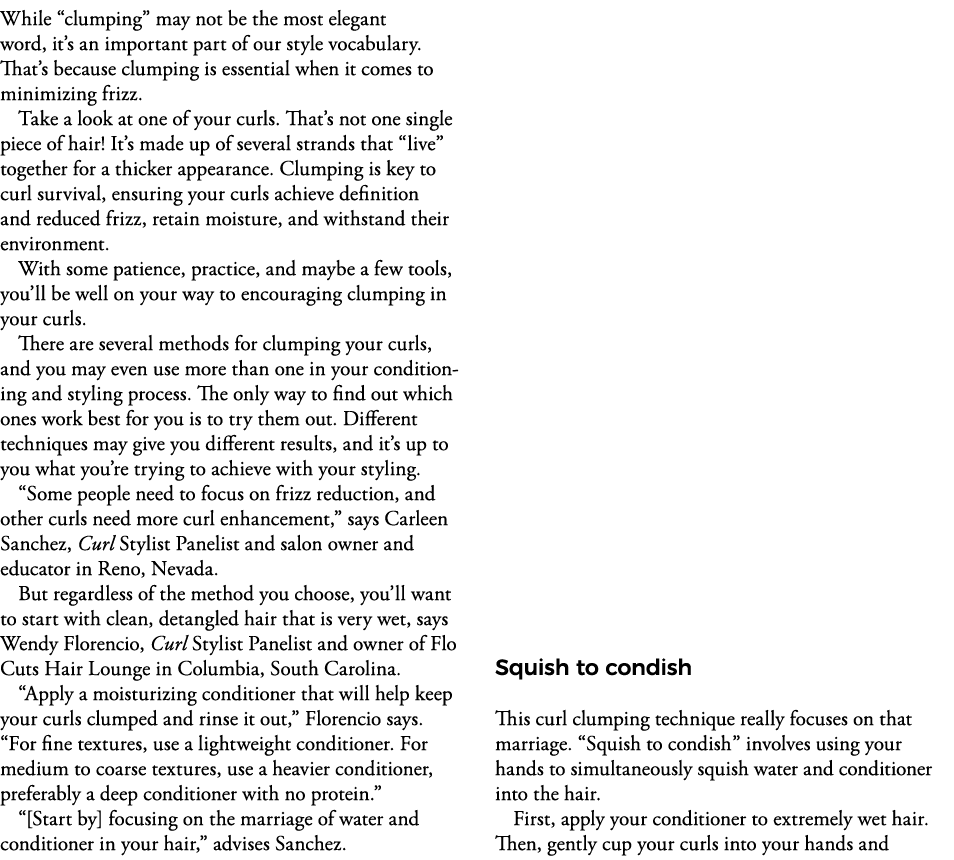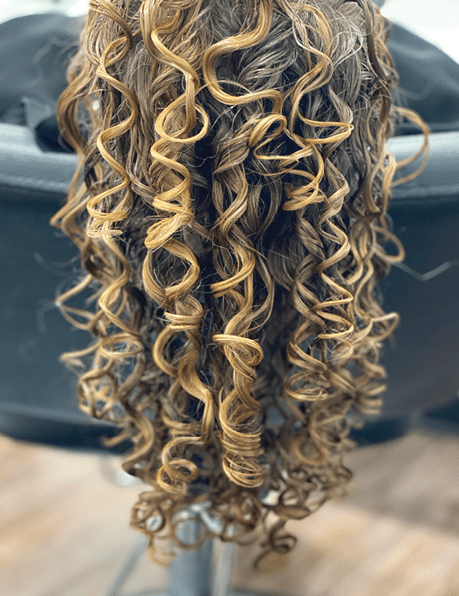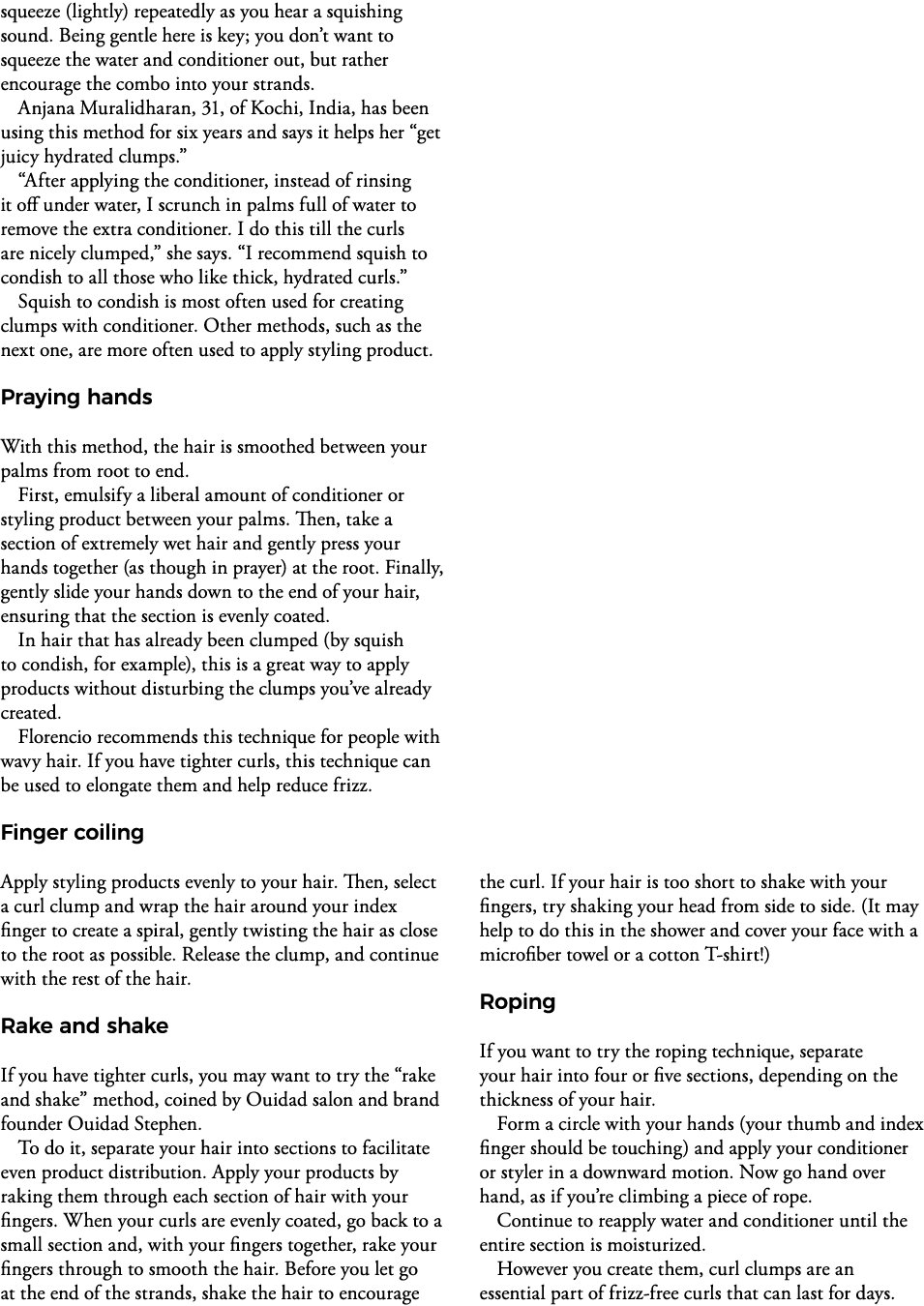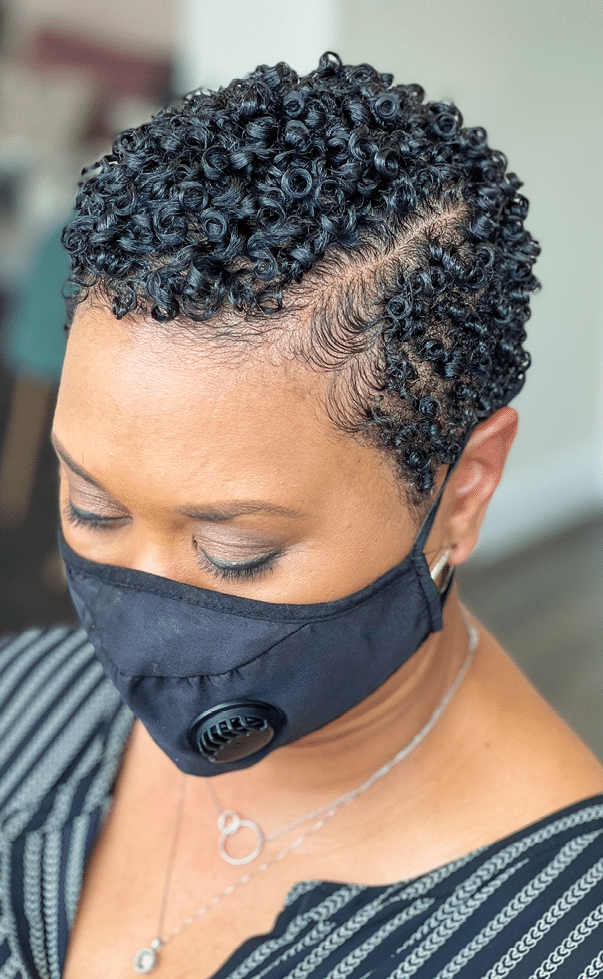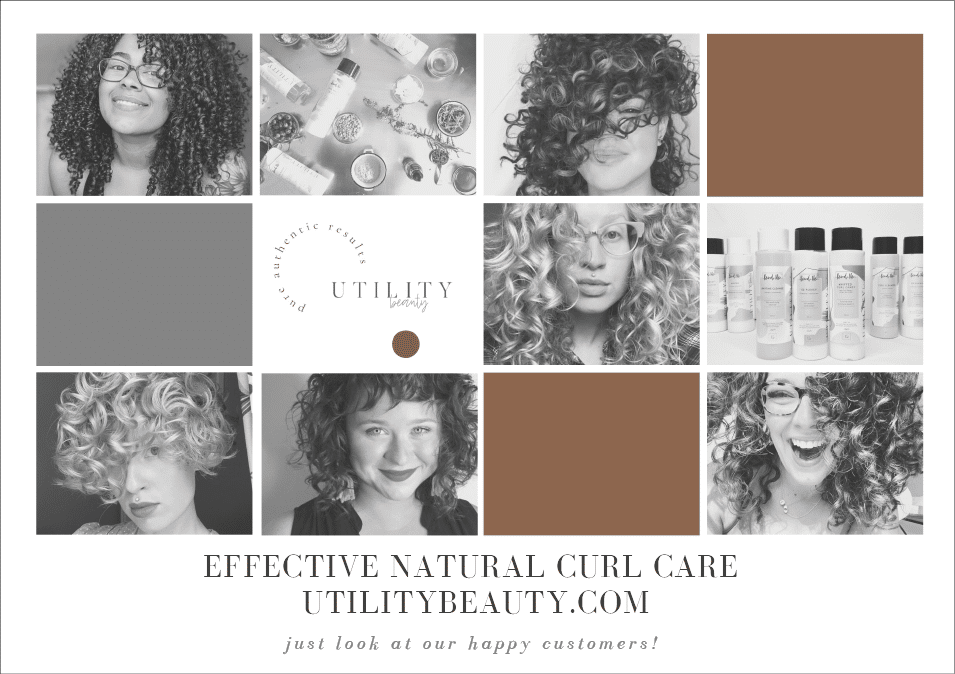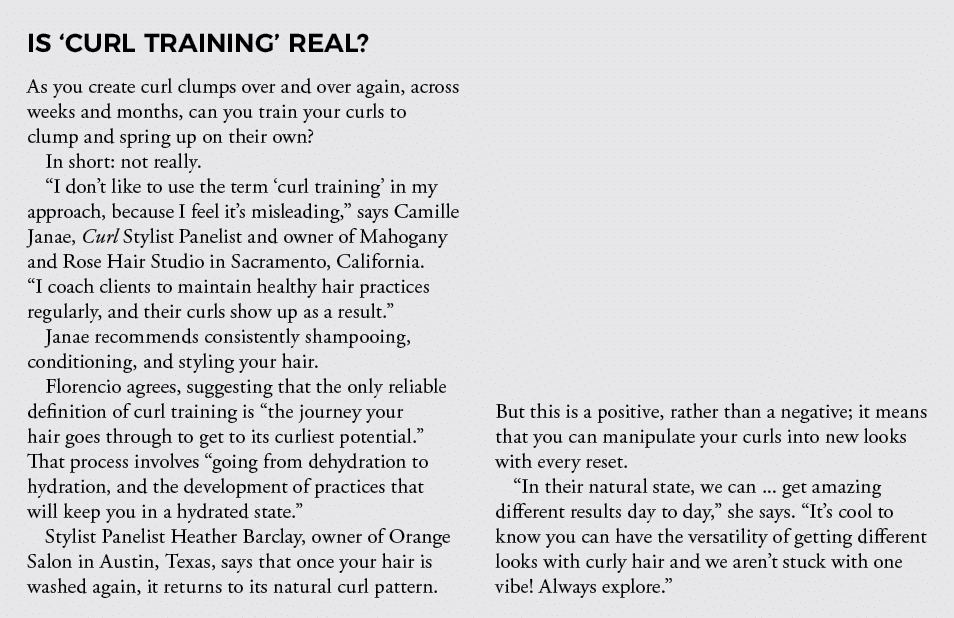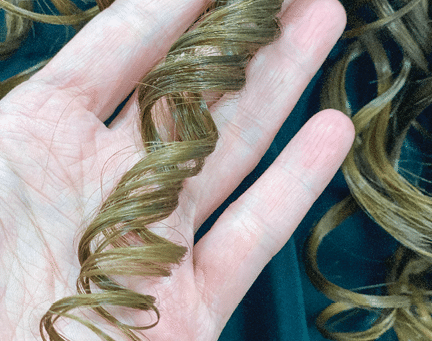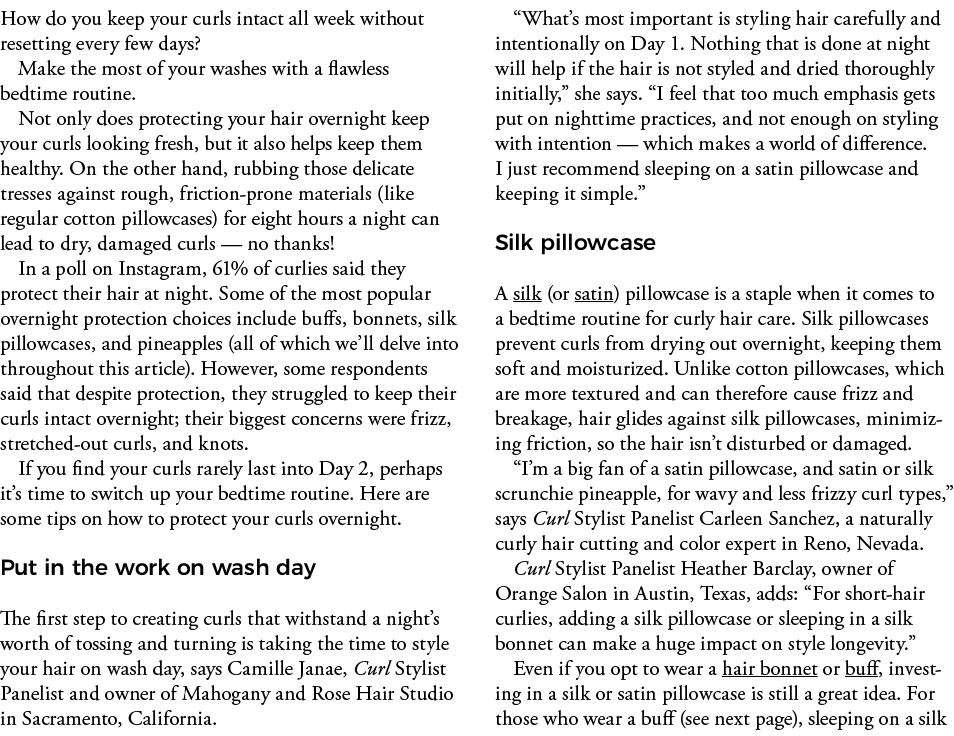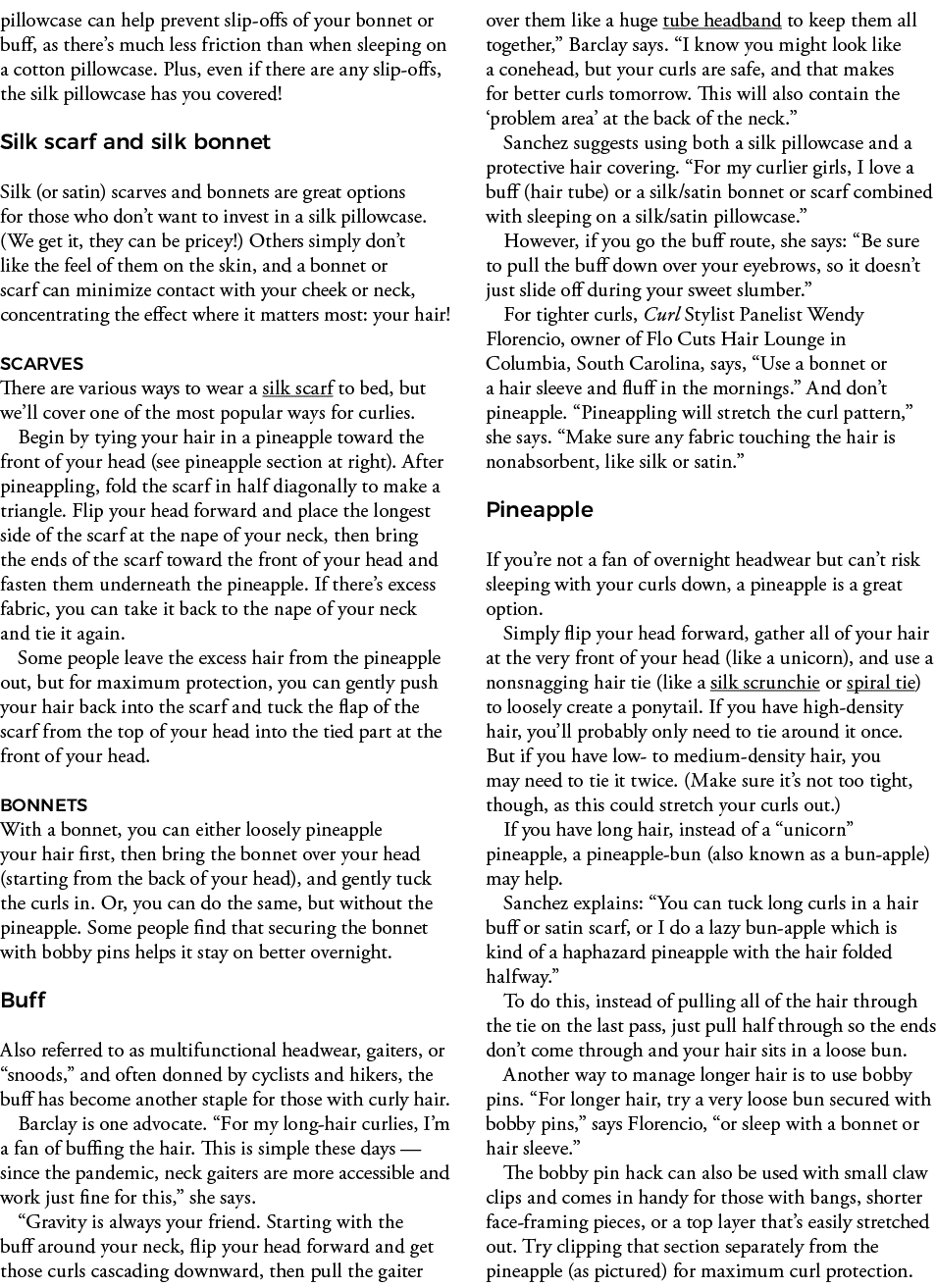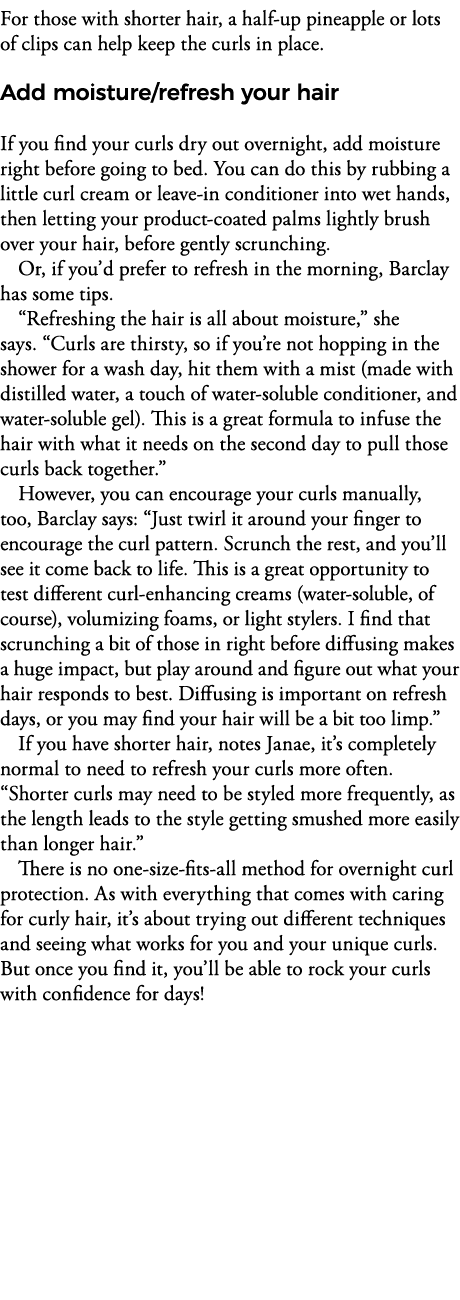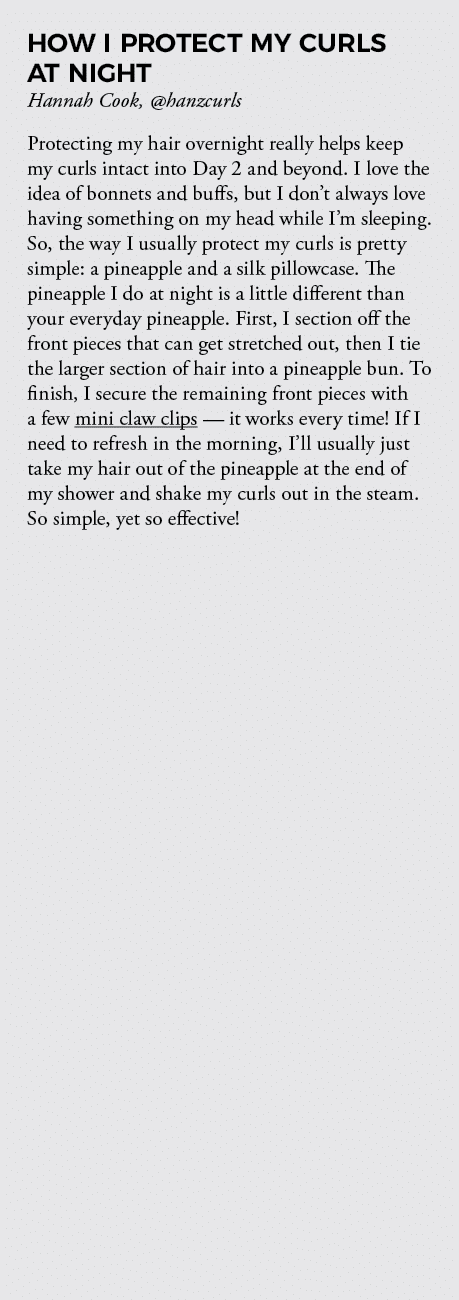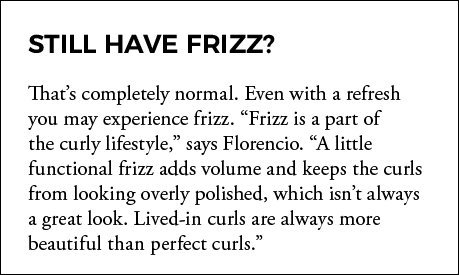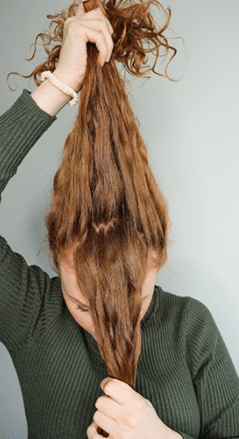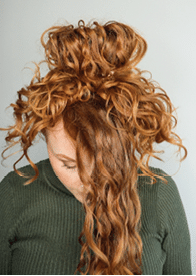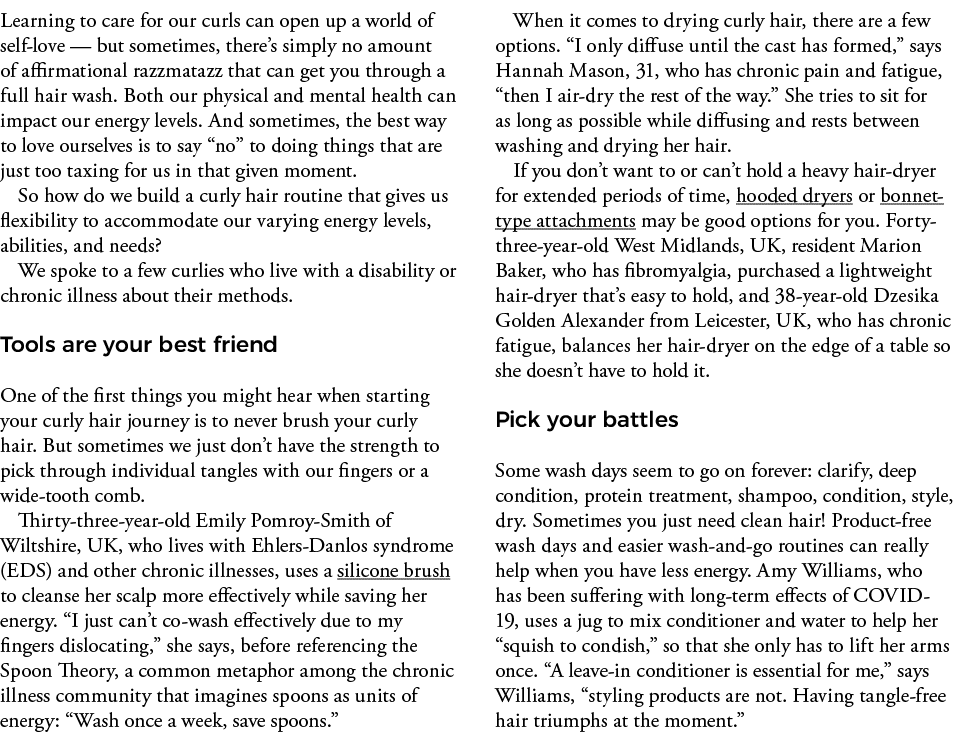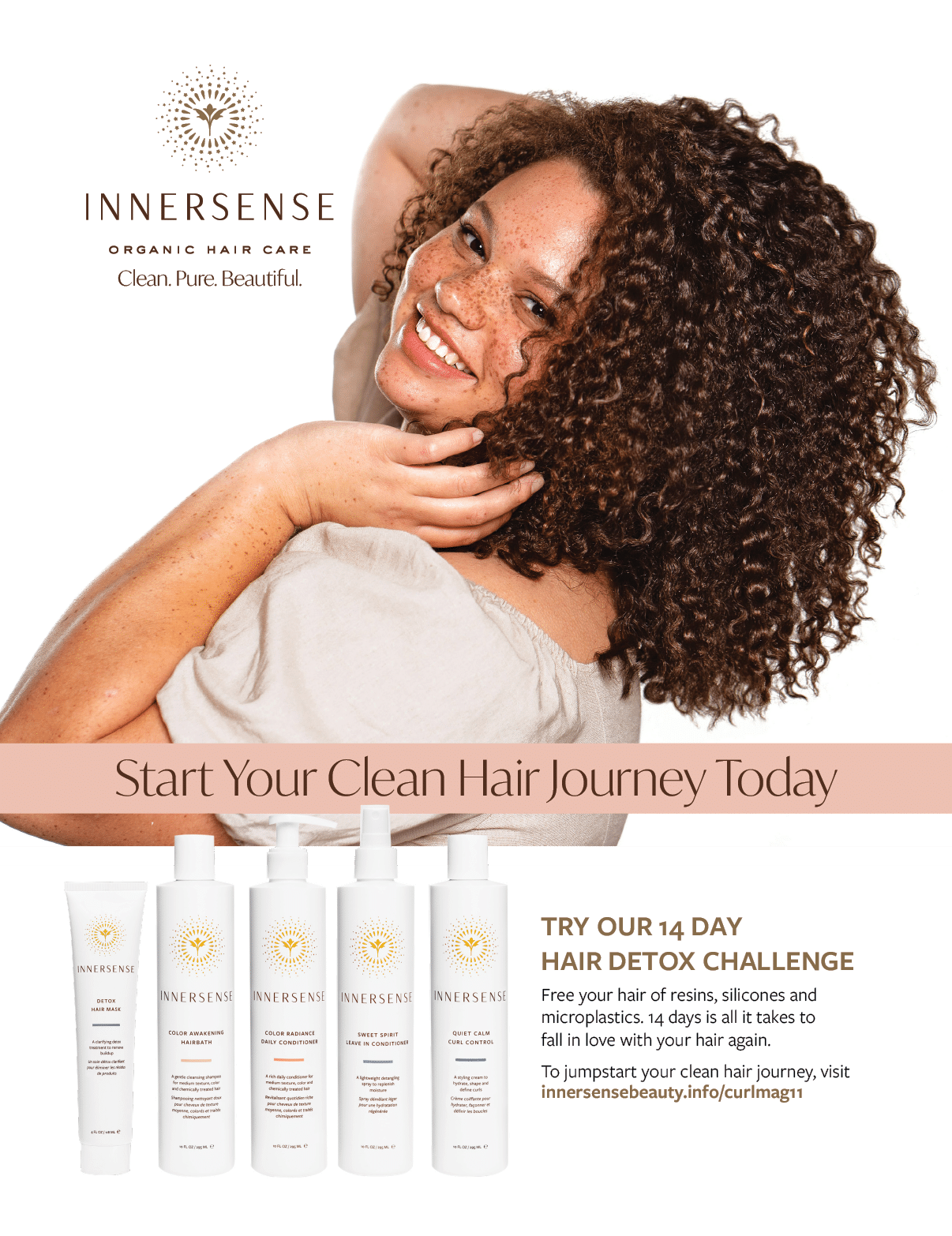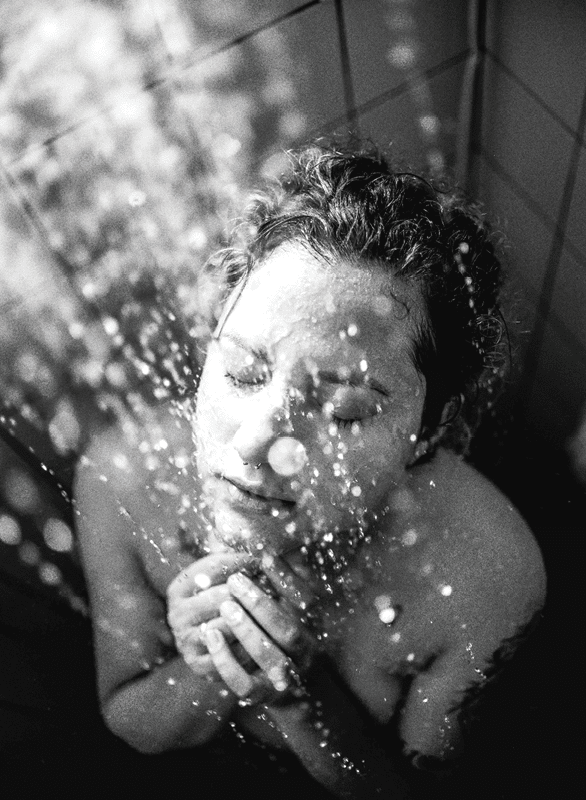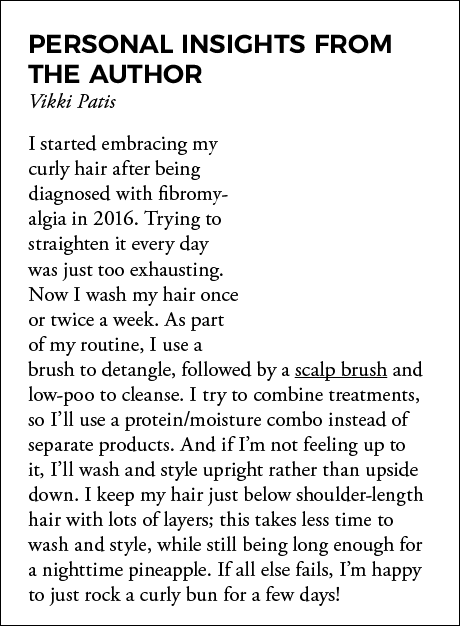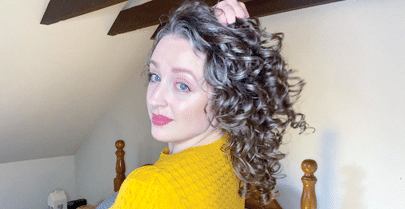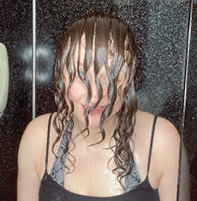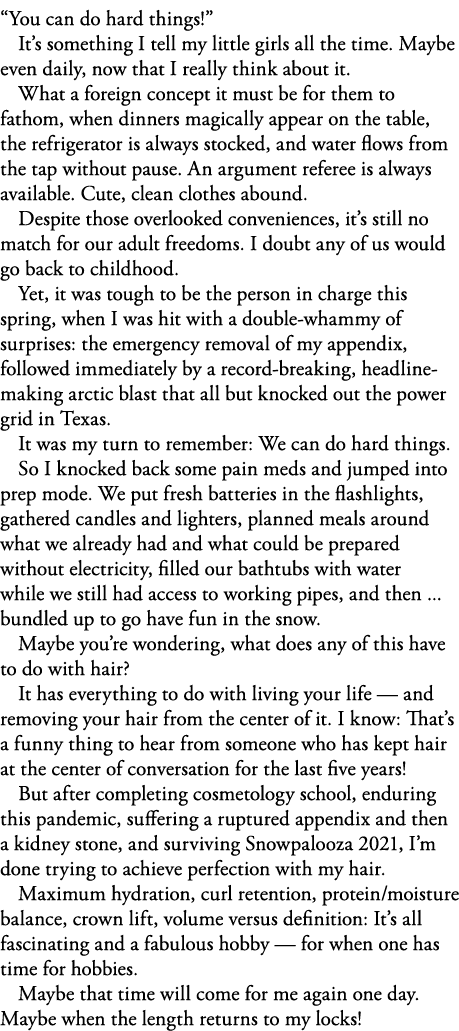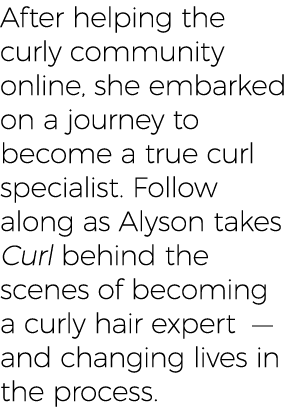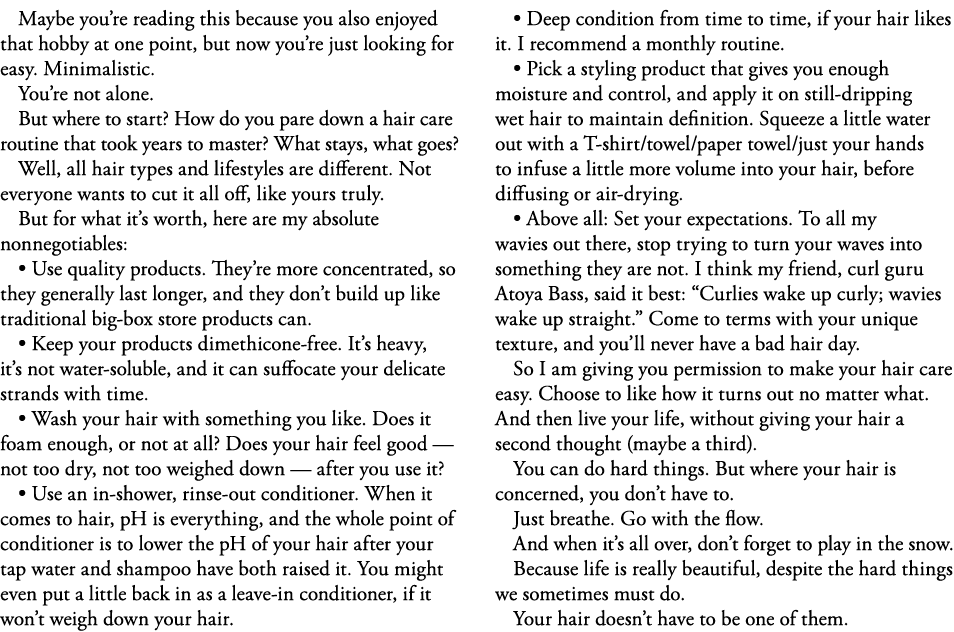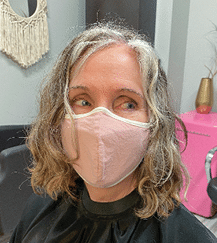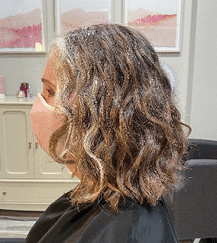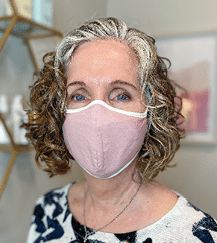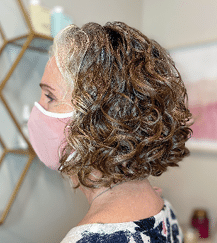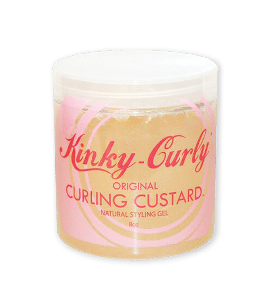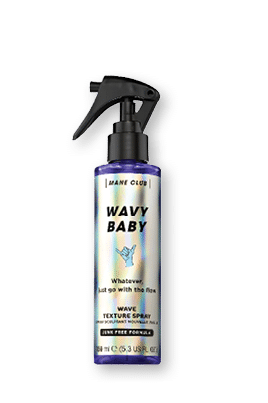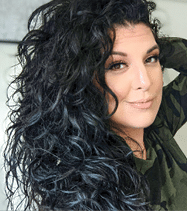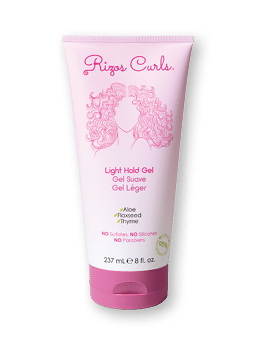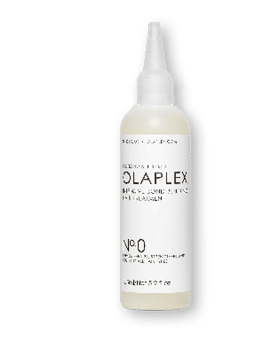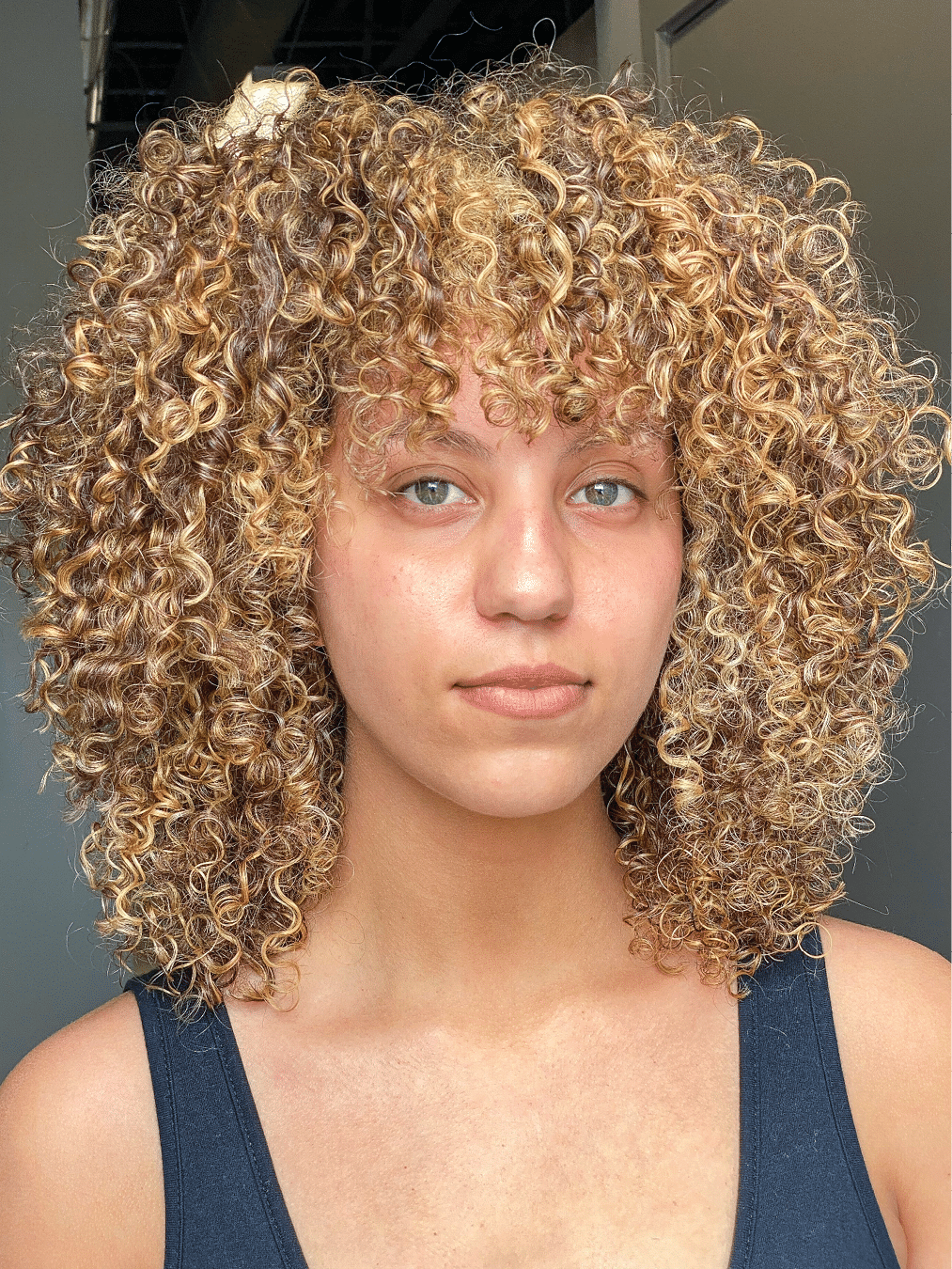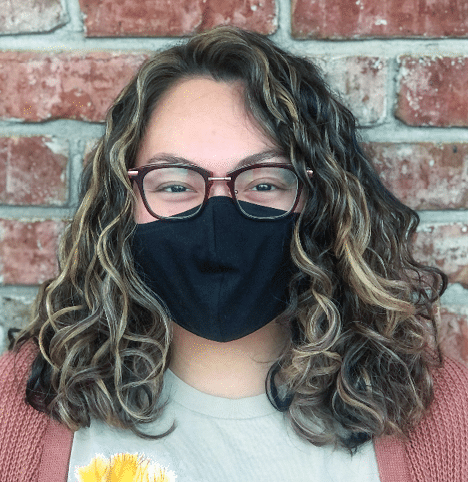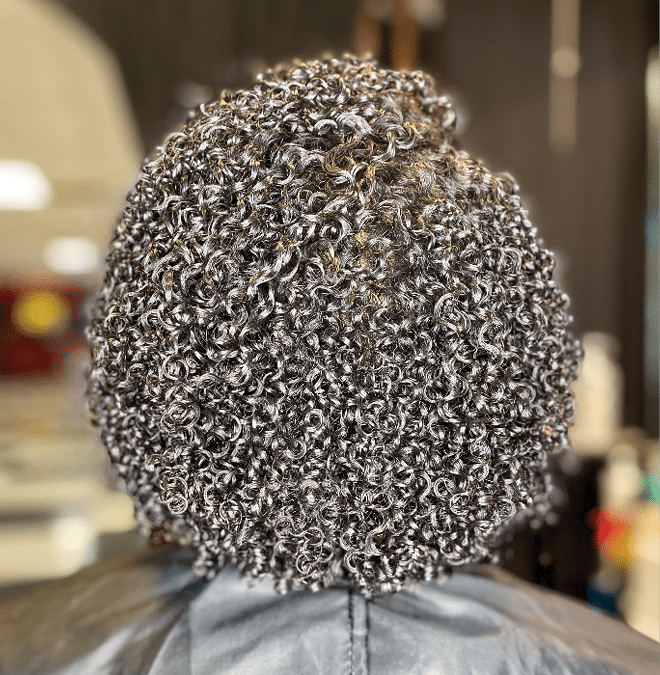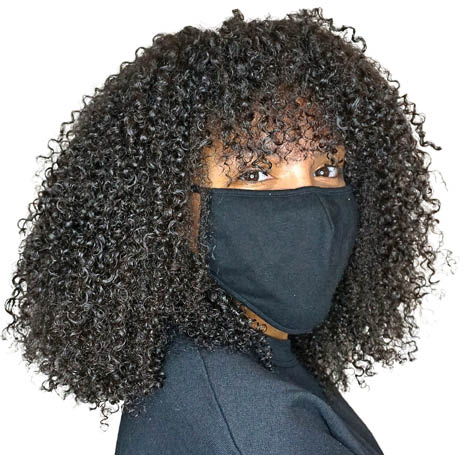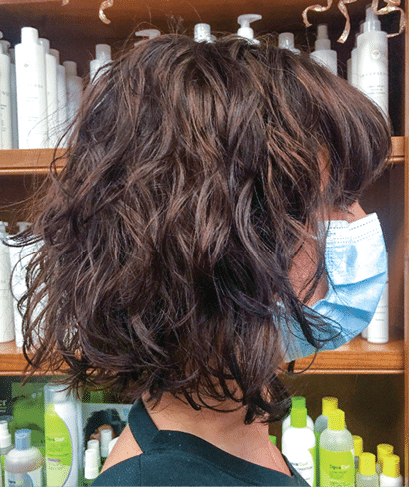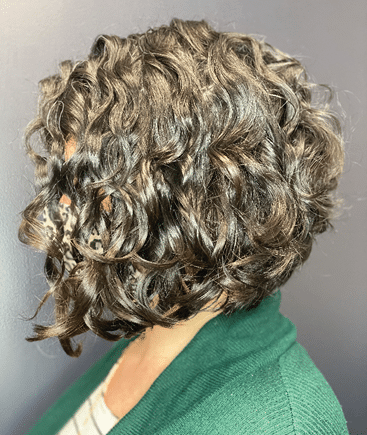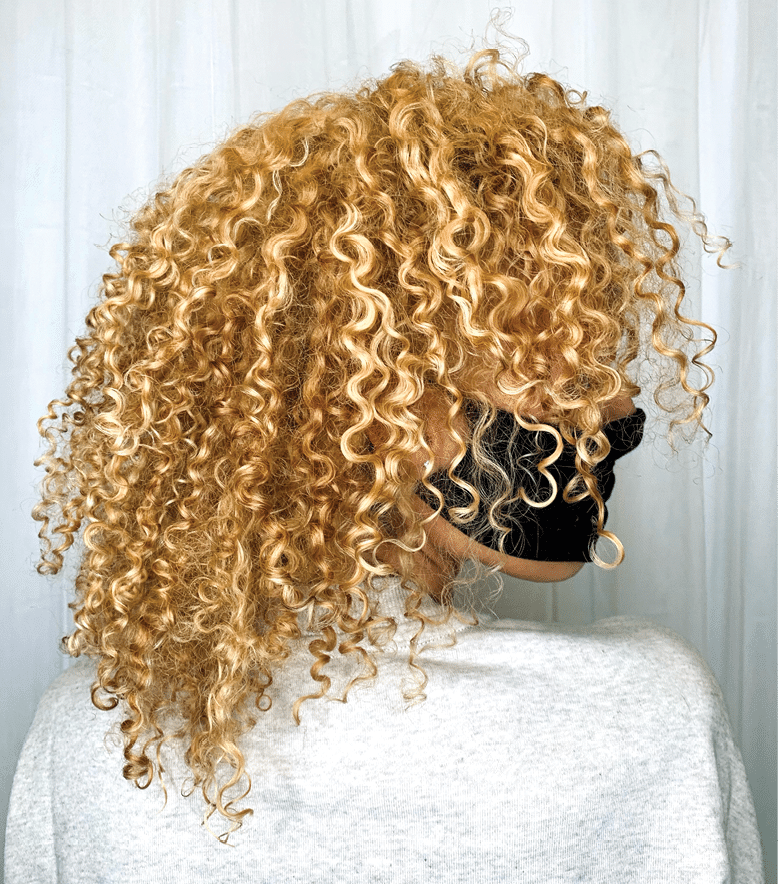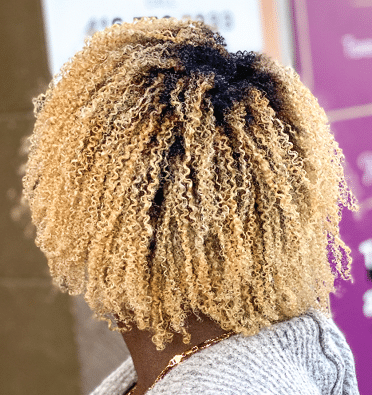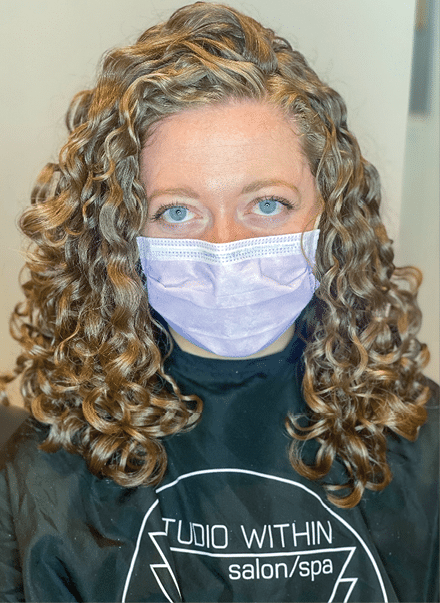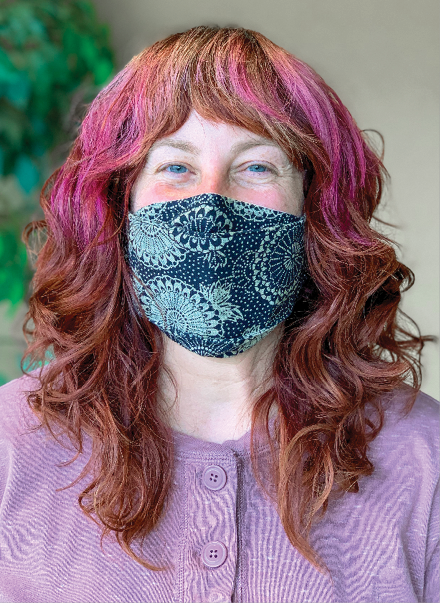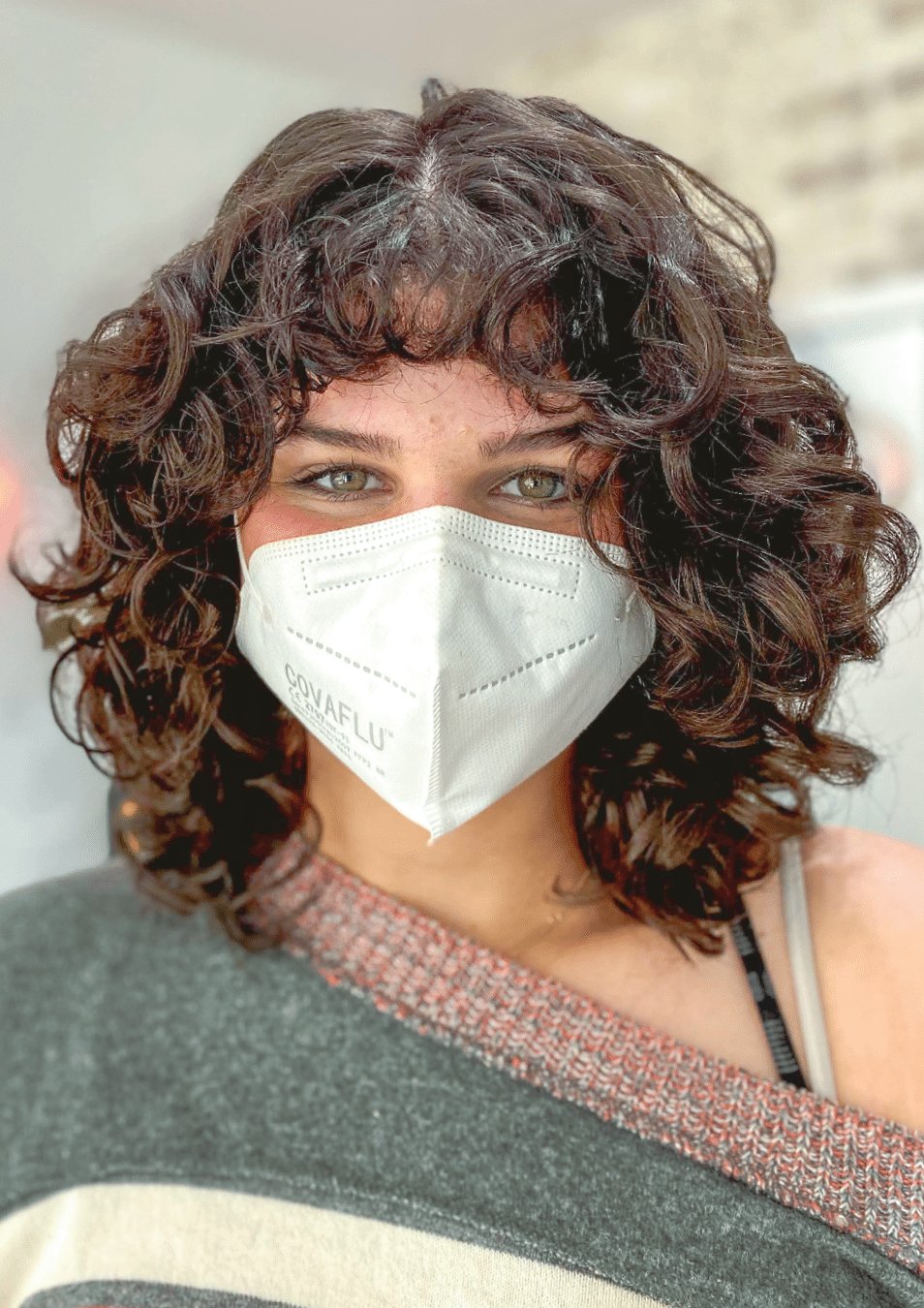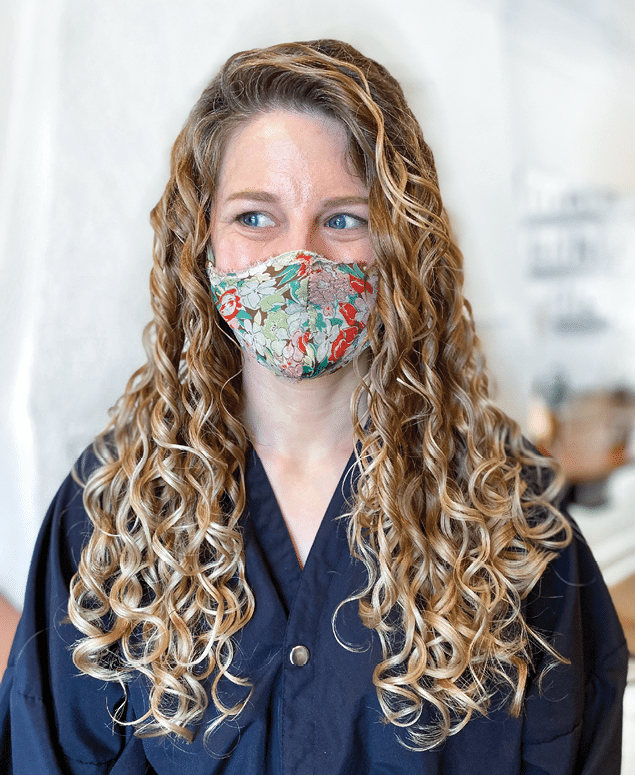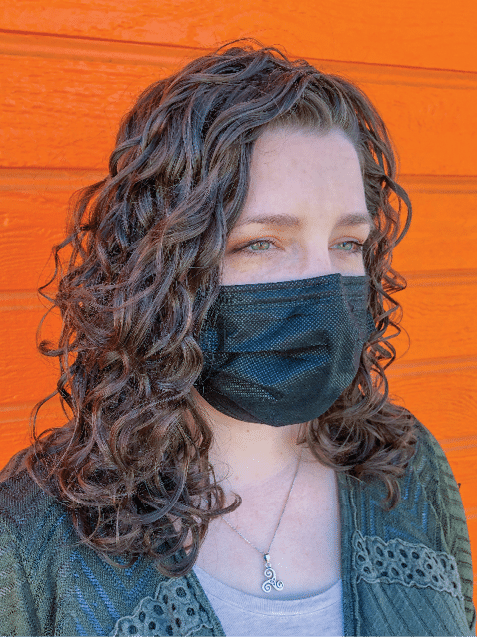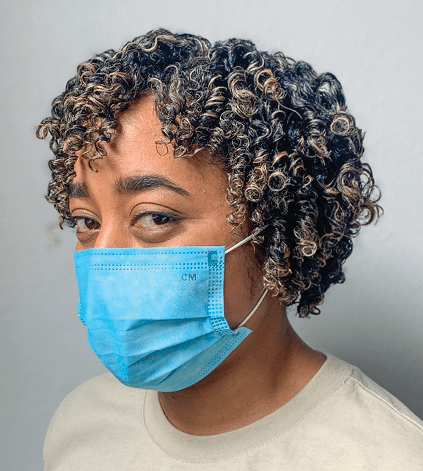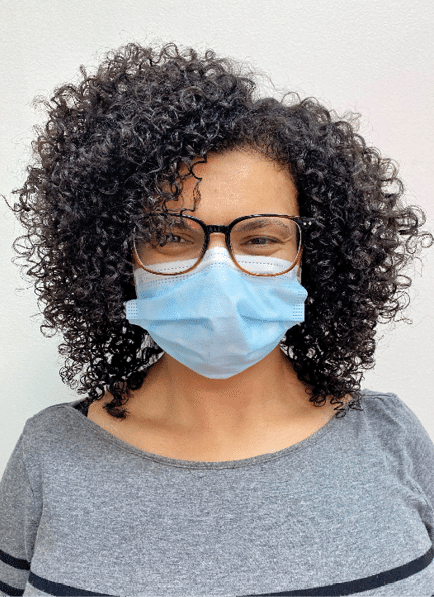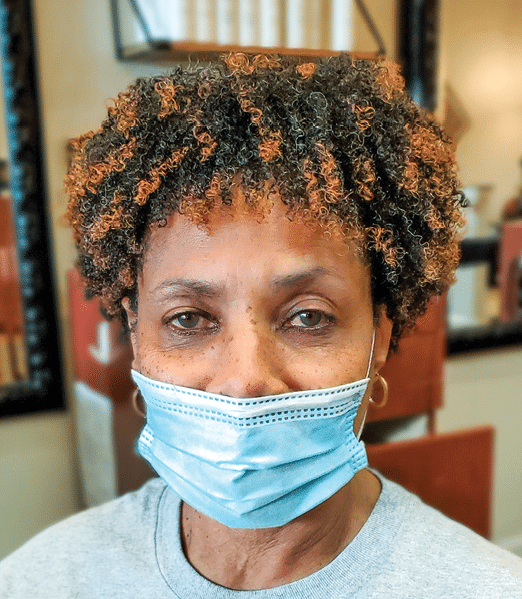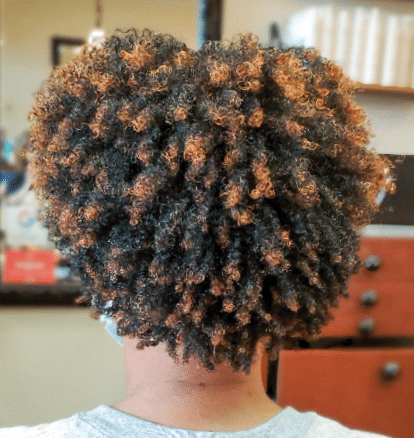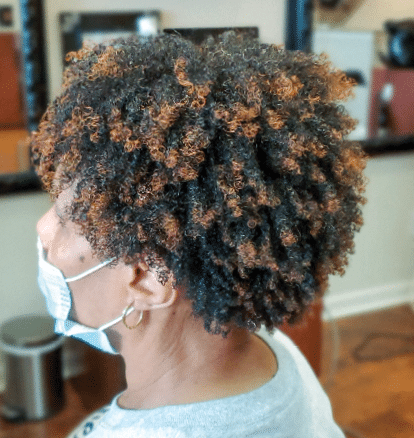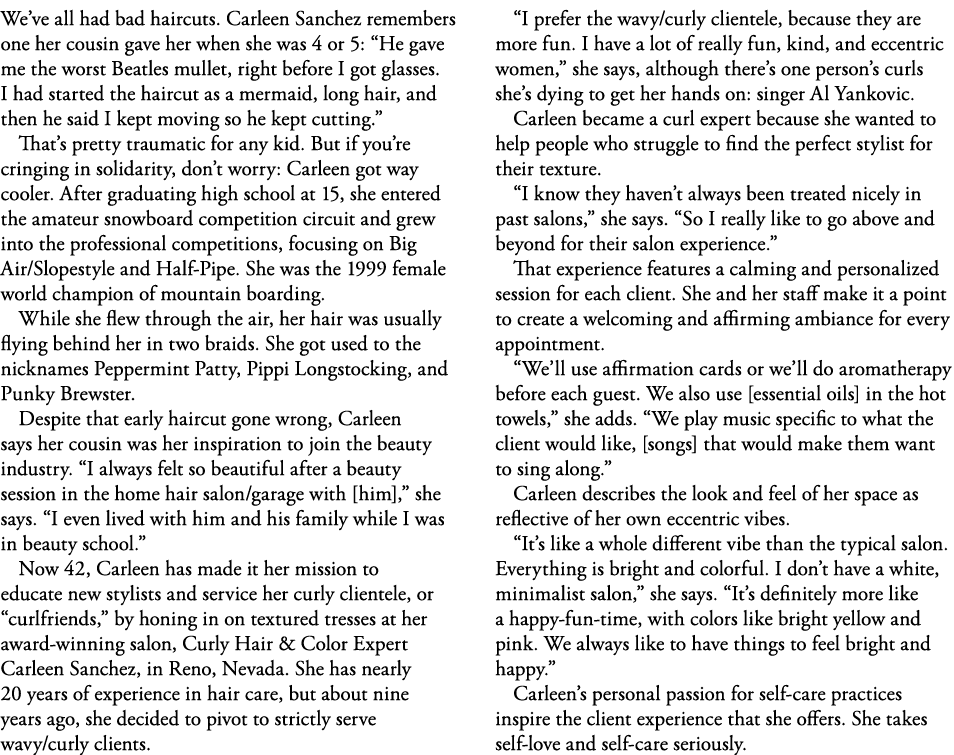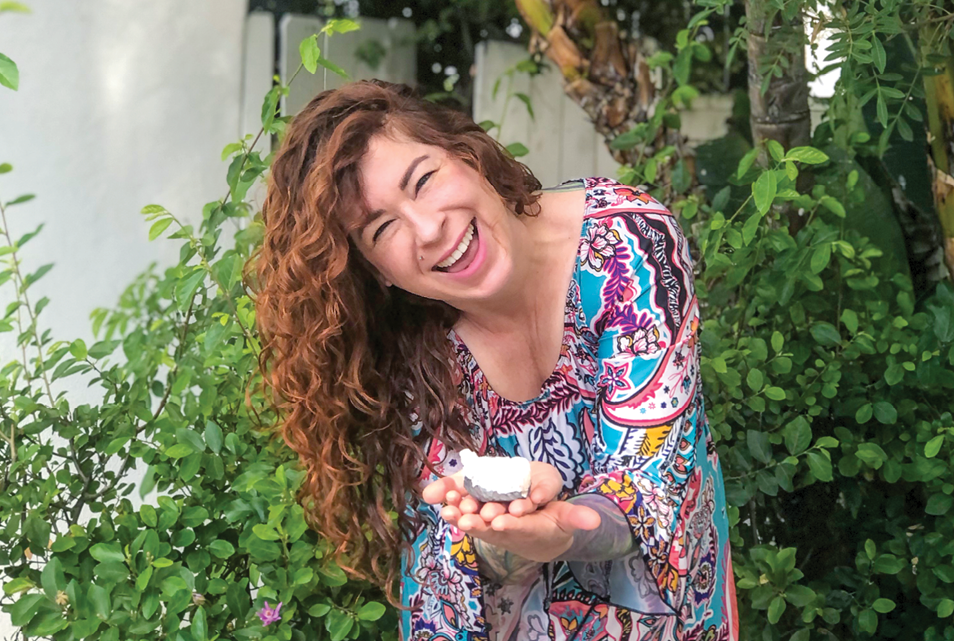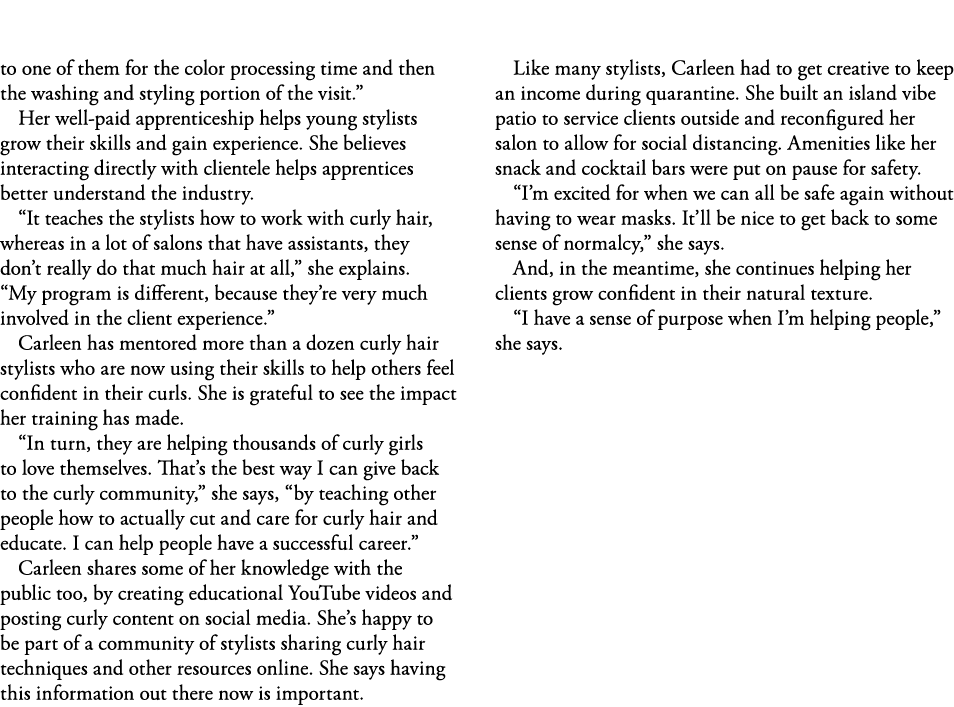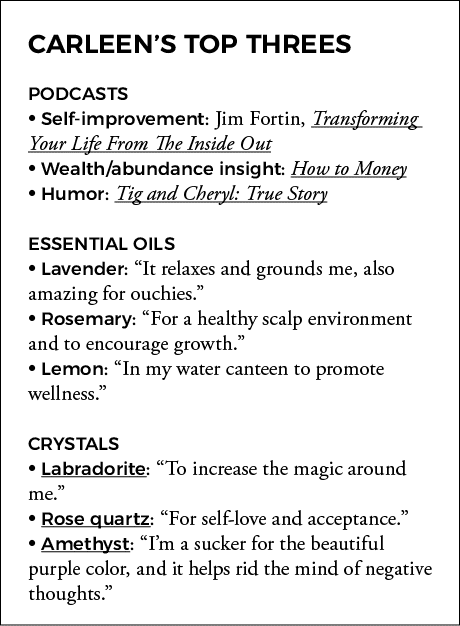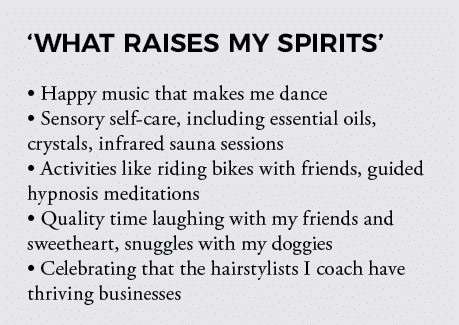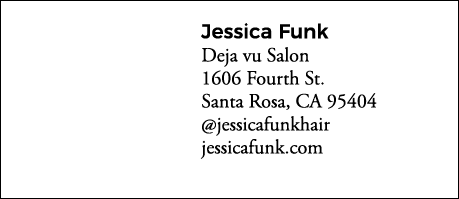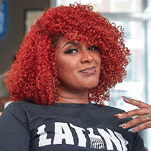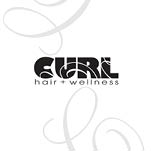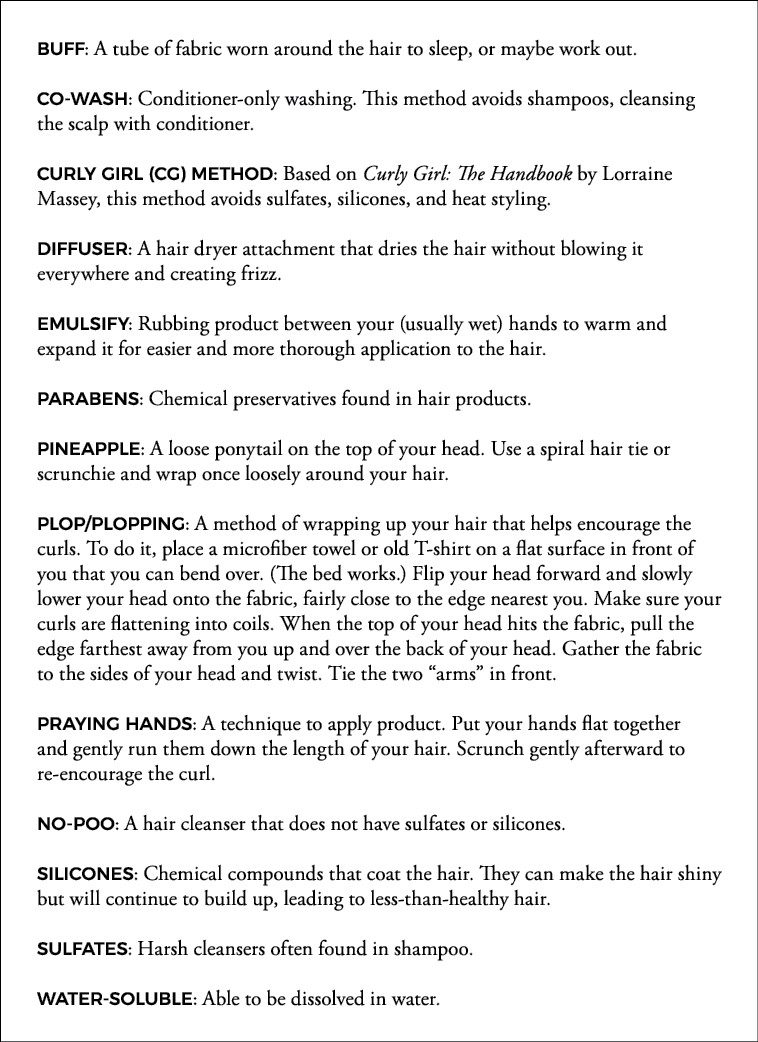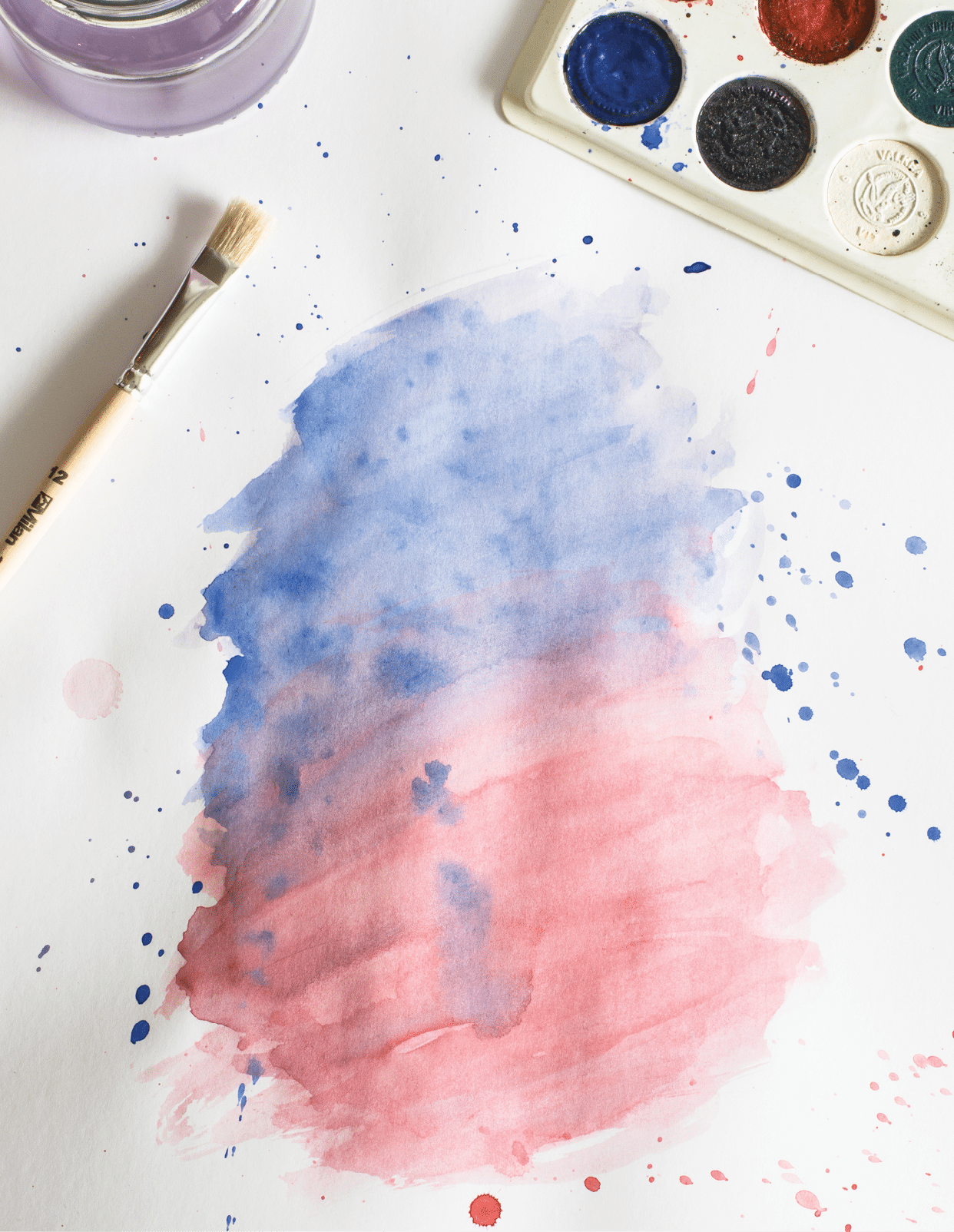A Deep Dive Into Pool Hair
WRITTEN BY GINA MARIE RODRIGUEZ
As the days grow longer, it’s impossible to avoid daydreams of a quick dip in the pool on a balmy summer day. But where there’s a pool, there is chlorine (or salt water) — and the dreaded “swimmer’s hair.”
While a quick dip in crystal-clear waters might seem like it can’t hurt, the dry, damaged, tangled, and brittle hair we’ve all experienced after swimming tells a different story. Why does pool water ruin hair in the first place? Can the damaging effects of swimming (and sunning) be avoided? And more importantly ... how?
We know we should protect our hair while swimming, and Googling “how to protect hair from the pool” yields the standard precautions:
• Rinse off and wet your hair with tap water before entering the pool
• Apply a leave-in conditioner (or coconut oil) to the hair before swimming
• Use a swim cap to seal out most of the water
• Rinse hair after swimming and use a moisturizing conditioner
But — reality check — how often are people actually following these suggestions? And do they really work? Let’s take a look at the science behind these suggestions.
1. Rinse off and wet hair before pool use
Nearly every public swimming pool has signs that read “No Running,” “No Lifeguard on Duty,” and “Enter at Your Own Risk.” But you might also see one that says, “Shower Before Entering the Pool.” Why is that so important? It sounds annoying: that long walk to the shower, twisting the metal knob, and the blast of cold water! At most, the sign might elicit a shrug before you inch indifferently into the shallow end.
However, there is a reason for this protocol. For one, it helps prevent that “pool smell.” The strong chemical smell you’re used to encountering at public pools isn’t an abundance of chlorine, it’s actually the chlorine interacting with excess oils (and any topical moisturizers) from people’s skin. The smell might be accompanied by a visible residue on the surface of the water — like an oil slick — which can cause mold-like stains and clog filtration systems.
Pretty gross, right? It’s worth a few seconds under the spray to avoid swimming in a skin oil slick.
But in addition to being a common courtesy, it’s also helpful for your hair.
Curly hair can absorb a lot of product — and a lot of water. That high absorbency is also known as porosity. All hair is somewhat porous/absorbent, but not as much as curly hair, and damaged or dehydrated curly hair is the most absorbent.
And what do you think your curls are absorbing once they hit that cool pool water? Chlorine.
Most people know the positive benefits of using chlorine in swimming pools: It kills bacteria and algae while acting as a real-time disinfectant to keep kiddie potty slipups from ruining everyone else’s fun. But it also dries out your skin, and it’s damaging to hair — especially color-treated, highlighted, or dehydrated hair.
When chlorine enters water, it dissolves and becomes hypochlorous acid, which is highly attracted to keratin protein and sebum — the same protein and natural oils that make up human hair, skin, and nails. Hair, skin, and nails swell when they get wet; this means absorbing water, and along with it, dissolved chlorine. The hypochlorous acid gains direct access to keratin and sebum. It combines with them and solubilizes (dissolves) them, as the unprotected keratin breaks apart bit by bit.
The more damaged and dehydrated the hair is, the more hypochlorous acid seeps in, and more natural proteins and sebum are dissolved. This causes more damage and creates a vicious cycle of pool water hair destruction.
It might sound simple, but wetting the hair with clean water first will help “fill up” the hair and leave less room to absorb the pool water. This dilutes the damaging effects of chlorine.
But it doesn’t prevent those effects altogether. That brings us to the next point.
2. Pre-swim hair treatments
Hair that’s coated in oils or silicones will be less porous and absorbent, which is why so many “pool tips” include coating the hair with some kind of protective layer, like a leave-in conditioner, prior to swimming.
Of course, there’s a lot of debate about whether it’s healthy to use products like coconut oil, shea butter, and silicone for curly hair. They can get in the way of daily wear, but for a specific purpose, could they be helpful? What are the benefits and drawbacks of using them?
OILS
Coconut oil and shea butter, along with other oils that are solid at room temperature, contain high levels of the medium-chain triglyceride fatty acid called lauric acid, which is attracted to the hair strand and able to penetrate deep inside it. Most oils contain a combination of fatty acids that are small (short-chain), medium (medium-chain), and large (long-chain). Short-chain fatty acids penetrate hair strands but do not contribute to long-term conditioning and do not generally block water absorption. Long-chain fatty acids are very large and sit on the surface of hair, repelling some water absorption (but not all), and generally lead to a greasy and heavy feel on the hair.
Some oils that contain triglycerides are polar (magnetically attracted to the hair), while others are nonpolar and simply sit on the surface of the strand. Nonpolar oils can be stripped away by chlorine and salt in pool water and are therefore not very helpful in the long run. Coconut oil and shea butter both contain polar triglycerides with an abundance of lauric acid that can fill in the gaps of dehydrated hair, preventing further damage from the pool water.
As far as ease of application though, warmed coconut oil is easier, albeit messier, to apply to hair than shea butter (since the melting point of coconut oil is much lower), and raw shea butter is quite expensive and thick.
The downside of using raw oils and butters on curly and wavy hair is that they can block out hydration when not properly removed. Plus, most of the oily residues will easily leach out into the pool, leading to unsatisfied curlies and displeased pool-owners alike. Oils also do not protect the hair entirely from the sun’s ultraviolet rays (offering 20% protection, at most).
LEAVE-IN CONDITIONERS
If oils aren’t a great choice for pool hair protection, how about a leave-in conditioner? Not so fast.
All hair conditioners are formulated with conditioning ingredients that are magnetically attracted to the negative charge found in hair, and they leave behind a nice slip; that’s why they work so well. But some of those ingredients are easily rinsed from the hair, and some are not. In this instance, using conditioning ingredients that are not easily rinsed will yield better swimming pool protection.
SPECIALTY PRODUCTS
There are hair care products that have been specially formulated to protect against chlorine and salt water absorption, and they offer UV protection. Good pre-swim leave-in treatments can be used on either damp or dry hair. Spray-on products are easy to apply but require more attention to thoroughly coat the hair. Damp hair applications are easier to distribute through the hair than dry applications — and when they’re applied after the standard pre-swim rinse and squish, they can offer double protection against pool water absorption. Just be sure to use an ample amount and distribute it throughout all of your hair a few minutes before diving in.
SILICONES
Curl stylists generally recommend not using silicones on curly hair, but they may have a place in swim protection.
Most silicones coat the hair and can’t easily be washed off. With repeated use, silicone-containing products continue attaching to hair, leading to buildup.
Molecules of amodimethicone, however, have
positive charges, and are mainly attracted to damaged areas of hair. That positive charge also means amodimethicone that is already attached to the hair will repel any new amodimethicone molecules that get layered on top, meaning no buildup. Once the amodimethicone sticks to hair, it crosslinks with its neighbors and forms a more durable film that can withstand swimming pool water and gentle washing, but can be removed with stronger clarifying cleansers and post-swim shampoos.
3. Wearing a swim cap
Wearing a swim cap is a great alternative to pre-swim hair treatments, but really: Outside of a swim meet or the gym pool, who regularly pulls out their swim cap?
Maybe more of us should be. Modern swim caps can be cute. They offer 95% protection against damaging UV rays. And they block most, but not all, water from entering the hair — and for that reason, for the very best results, you’d still want to apply a pre-swim treatment or wet the hair prior to pulling on a swim cap. Opt for an extra-large cap to hold long or thick hair.
4. Rinse hair with clean water after swimming
The last recommendation on the internet’s standard precautions list is to rinse hair with clean water again right after swimming. That’s practical advice we can get behind: If any pool water did make it into the hair, speedy removal will minimize any further damage.
Focusing time and attention on healthy hair practices such as hydration, treating existing damage, and prevention of future damage from sun and pool water will benefit every person and every texture of hair.
However, the best defense is a good offense — so start preparing now. After all, the healthier the hair
at the beginning of summer, the better it will weather the season.
Learn the best ways to protect your hair
from the water and rays
Tip: That 20-second pre-swim rinse at the pool shower is simply not enough to ward off chlorine absorption. Healthy, natural hair can take up to 20 minutes to fully absorb tap water. Don’t have 20 minutes to spare? Speed up the process by squishing the water into the hair like a dry sponge under the faucet.
Tip: To block water absorption into the hair strand, liberal amounts of oil must be applied to dry hair at least 15 minutes prior to water exposure.
A common misconception is that chlorine in the pool causes hair to turn green — but it’s not all chlorine’s fault. The green color is caused by the presence of copper in a chlorinated pool. When copper and chlorine meet, they usually create copper-chloride. However, when they meet in the presence of water (like, say, a swimming pool) the molecules crystallize, creating copper chloride dihydrate, which is a bright blue-green color. If that chemical reaction meets blond hair strands, they’ll turn a pale green. Additionally, red hair will “brown out,” and brown hair can appear more dull.
RECOMMENDED BEST PRACTICES
Weeks before sun and pool exposure
• Double up on damage repair treatments. As a curl specialist and former Curl Stylist Panelist, I recommend Olaplex No. 3 and K18 Hair Masque to bolster your hair’s internal bond strength.
• Purchase protective hair coverings like wide-brimmed hats, as well as head coverings like a Buff UV, silk or satin wraps, and large swim caps for your dips in the water.
On pool days
Decide on your pool water protection method:
• Coconut oil prevention on dry hair (applied
15 minutes prior to exposure)
• Leave-in hair treatment on damp hair with amodimethicone, conditioning ingredients, and antioxidants and UV blockers to preempt damage
• Swim cap for full UV protection
After pool and sun exposure
• Rinse hair immediately after exiting the pool.
• Wash out pool water with swimmers’ shampoo/conditioner, or use hard water treatments as soon
as possible after swimming to remove damaging copper and pool chemical residue. (A swimmers’ shampoo is similar to a hard water shampoo. It’s slightly more clarifying to remove chlorine, but
still gentle, depending on the brand. These
products usually contain EDTA or something
acidic for chelation.)
• Continue using damage treatments regularly in preparation for the next pool day.
Do you think swimming in salt water is as damaging as a chlorinated pool?
CARLEEN SAYS: “I don’t think salt water is as bad as chlorine, but I still would recommend washing your hair ASAP [after swimming] to remove the cooties and salty yucks.”
WENDY SAYS: “We have salt bonds in our hair, so salt water can be good for fine, wavy hair. It helps in creating more texture and really defining waves. But too much exposure and the salt will dry out the water content within the hair, leaving it dry and brittle. In very curly or coily hair, the salt will create dryness by absorbing the water, leaving the hair dry, and can raise the cuticle, making it harder to retain moisture. Chlorine is still the worst of the two, in my opinion.”





